What to Read Next If You Love Downton Abbey
An Edwardian family faces a changing world in this British drama of manners that’s a little bit Austen, a little bit soap opera, and entirely satisfying. Get your Downton fix with historical fiction featuring rich details and nuanced character development.
An Edwardian family faces a changing world in this British drama of manners that’s a little bit Austen, a little bit soap opera, and entirely satisfying. Get your Downton fix with historical fiction featuring rich details and nuanced character development.
The Age of Innocence
Edith Wharton’s The Buccaneers may have been an inspiration for Downton Abbey, but it’s Wharton’s The Age of Innocence that really channels the wistful privilege of Edwardian life, right down to the not- entirely-happy ending. (High School)
The Davenports
In 1910 Chicago, the four Davenport daughters are among the wealthiest Black families in the United States. This novel, like Downton Abbey, is definitely lighter on the history than the romance (even though it’s based on the real-life Patterson family, who are totally rabbit trail-worthy, if you are so inclined), but it’s still really cool what it was like to be part of the Black one-percent during the early 20th century. And yay for historical fiction about Black joy and Black success, which I always personally love to see. (High School)
The Remains of the Day
In The Remains of the Day, Kazuo Ishiguro explores the slow decline of the aristocracy in the early 20th century from the perspective of a faithful — perhaps, ultimately, too faithful — butler. (High School)
Sense and Sensibility
Sense and Sensibility by Jane Austen is set in an earlier time, but its story of two very different sisters, an entailed inheritance, and the problems of class and wealth will resonate with any Downton fan. (High School)
Jeeves and the Wedding Bells
Sebastian Faulks brings back Bertie Wooster in Jeeves and the Wedding Bells, a lighthearted peek at the Edwardian aristocracy featuring a perpetually befuddled young gentleman and his unflappable valet. (High School)
Hetty Feather
Hetty Feather is set at the end of the Victorian era, but Jacqueline Wilson’s novel about a girl who escapes from the Foundling Hospital to find her family is full of as many dramatic twists and turns as the best Downton episodes. (Middle Grades)
What to Read Next If You Love Into the Woods
Fairy tales get complicated in these twists on tradition. You’ll never read “happily ever after” the same way again.
Fairy tales get complicated in these twists on tradition. You’ll never read “happily ever after” the same way again.
Interrupting Chicken
Interrupting Chicken just wants everybody to get a truly happy ending — which they would, if they would just listen to his very good advice! This is a fun read aloud for anyone who’s ever wanted to interrupt the story to steer its characters in a better direction. (All Ages)
Egg and Spoon
A case of mistaken identity lies at the center of Egg and Spoon: Elena, a peasant living in the Russian countryside, changes places with wealthy Ekaterina who is on her way to see the Tsar in Saint Petersburg. Along the way, the two girls match wits with Baba Yaga, uncover a prince in disguise, and explore a world full of Russian folklore. (Middle Grades)
Rumaysa: A Fairytale
What would traditional western fairy tales look like through the lens of another culture? Radiya Hafiza retells the stories of Rapunzel, Cinderella, and Sleeping Beauty in the surprisingly delightful Rumaysa: A Fairytale, which begins when imprisoned Rumsaya lowers her hijab out a tower window to escape to freedom. (Middle Grades)
Spinning Silver
In Naomi Novik’s Spinning Silver, a moneylender’s savvy daughter gains a reputation for turning silver into gold — bringing her to the unwanted attention of the king of the Staryk. It’s a brave new Rumpelstiltskin. She’s not the only young woman who sees an opportunity to rewrite her life for the better in this layered story. (High School)
Cinder
In futuristic New Beijing, Cinderella is a cyborg mechanic who gets caught up in struggle for the crown. Cinder lives with discrimination against cyborgs from her society, but her stepmother never misses a chance to remind her that she’s not a real person. When she’s caught up in a power struggle around Prince Kai, Cinder has to decide what her own happy ending might look like. (High School)
Kissing the Witch: Old Tales in New Skins
I’m always recommending Kissing the Witch: Old Tales in New Skins because it’s one of my favorite books from high school. Emma Donoghue reimagines 13 fairy tales in new, feminist queer retellings, including one in which (finally!) a Beauty realizes that she cannot change the beast. (High School)
What to Read Next If You Like Lemony Snicket
If you loved The Bad Beginning, Lemony Snicket's hilariously tragic chronicle of the sad adventures of the Baudelaire orphans, add these titles to your library list this summer.
If you loved The Bad Beginning, Lemony Snicket's hilariously tragic chronicle of the sad adventures of the Baudelaire orphans, add these titles to your library list this summer.
Your Next Picture Book
Pierre: A Cautionary Tale in Five Chapters and a Prologue by Maurice Sendak
Pierre: A Cautionary Tale in Five Chapters and a Prologue by Maurice Sendak is a delightfully subversive story about a bratty boy who gets a lion-sized comeuppance.
Your next chapter book
The Wolves of Willoughby Chase by Joan Aiken
The Wolves of Willoughby Chase by Joan Aiken pits bold Bonnie and her orphaned cousin Sylvia against an evil governess.
Your next readaloud
Dial-a-Ghost by Eva Ibbotsen
Dial-a-Ghost by Eva Ibbotsen turns the traditional ghost story on its head by introducing sympathetic specters who rescue young Oliver from his nefarious cousins.
Your next teen read
Good Omens by Terry Pratchett and Neil Gaiman
Good Omens by Terry Pratchett and Neil Gaiman makes the Apocalypse a comedy of errors, complete with a reluctant Antichrist, a hellhound who just wants to be a Good Boy, and a set of prophecies that are a little too accurate.
Your next grown-up book
The Eyre Affair by Jasper Fforde
The Eyre Affair by Jasper Fforde puts Special Ops literary detective Thursday Next into perilous situations both in and out of classic literature.
What to Read Next If You Loved The People Could Fly
There’s a kind of magic in imagining worlds shaped from non-European culture and myth — and these books paint possibilities powerful and profound.
These books celebrate Black storytelling traditions.
There’s a kind of magic in imagining worlds shaped from non-European culture and myth — and these books paint possibilities powerful and profound.
The People Could Fly by Virginia Hamilton
When The People Could Fly was published in 1985, it heralded a movement toward more diverse literature — Virginia Hamilton called her work “Liberation Literature,” and one of its goals was to preserve Black culture and memory through books and stories. We may be living in a golden age of diverse literature, and if you loved The People Could Fly, add these empowering books based on Black history and culture to your homeschool reading list.
Zahrah the Windseeker by Nnedi Okorafor
Zahrah the Windseeker isn’t like the other kids in the Ooni kingdom — her long green dadalocks made her an object of fear for many in her techno-nature community. But when Zahrah’s best friend’s life is in danger, she is the only one who can venture into the forest to save him. (Middle grades)
The Jumbies by Tracy Baptiste
Corinne La Mer isn’t afraid of anything, including The Jumbies — but maybe she should be. One of these Haitian folk monsters is after her family, and Corinne must channel her own unexpected magic to save the day. (Middle grades)
Hurricane Child by Kacen Callender
Being a Hurricane Child is believed to be bad luck — and it’s certainly been that way for Caroline, who’s been despised by her classmates and abandoned by her mother. But a new student inspired Caroline to channel her inner courage, and they set out on an adventure that may restore Caroline’s lost luck — and her mother. (Middle grades)
Tristan Strong Punches a Hole in the Sky by Kwame Mbalia
A whole world of African folklore and legend opens up in Tristan Strong Punches a Hole in the Sky, when Tristan accidentally unleashes evil on the MidPass and discovers that he is one in a long chain of Storytellers with the ability to shape reality through stories. (Middle grades)
The Gilded Ones by Namina Forna
In The Gilded Ones, girls with golden blood are considered impure — and subject to all kinds of abuse. Deka is one of them, but an unlikely opportunity presents itself: If she joins the emperor’s elite military force, full of girls with the same golden blood, all her sins will be forgiven. Of course, it’s much more complicated than she knows. (High school)
Children of Bone and Blood by Tomi Adeyemi
In Children of Bone and Blood, Zélie has just one chance to bring magic back to Orïsha and take down the ruthless monarch who is determined to eradicate it forever. (High school)
Shadowshaper by Daniel Jose Older
Sierra discovers that she’s a Shadowshaper, a person who has the ability to connect with spirits through art, music, and stories — a discovery that comes just in time, since another Shadowshaper is attempting to channel all their power for himself. (High school)
What to Read Next If You Love Nancy Drew and the Hardy Boys
If you love solving mysteries with Nancy Drew and the Hardy Boys, we’ve got a reading list of detective stories from picture books to adult novels you’ll love.
Let’s face it: Few things are as fun as racing to put together the clues before your favorite intrepid detective solves the case. We think these books make worthy follow-ups (or lead ups!) to the adventures of Nancy Drew and the Hardy Boys.
Older Nancy Drew fans may find the dark, twisty, supernatural TV version of the classic stories a lot of fun — I did!
Nancy Drew and the Hardy Boys set the standard for grade-school mysteries, but even with all those titles in the series, you may reach a point when you need something more. These mysteries — from picture books to adult novels — also ask you, the reader, to put together the clues to solve the case, using your eye for details and creative problem-solving abilities. Most of these are part of a series, since part of the fun of the Drew-Hardy world is the luxuriously long list of titles.
Your next picture book
Alphabet Mystery by Audrey Wood
In Alphabet Mystery by Audrey Wood, the lowercase letters must team up to find little x, who’s gone missing just before his mom’s big birthday bash. This is a great book for practicing letter recognition, since you’ll be hunting for all the letters on every page — but it’s not a great learning-the-alphabet-in-order book because the letters don’t appear in order. It’s a fun picture book mystery, though, with a sweet message about how we may be more important than we realize — even if it doesn’t always feel that way.
Your next chapter book
Mudshark by Gary Paulsen
Mudshark by Gary Paulsen introduces Mudshark, a kid whose reputation as a great problem solver is challenged by a case of disappearing erasers at his school. He’s also got unexpected competition — in the form of a librarian’s apparently psychic pet parrot. (This one should maybe go on an “if you loved Encyclopedia Brown” reading list, too, because it does a similar vibe with lots of small episodic mysteries around the bigger one.)
Your next readaloud
Sammy Keys and the Hotel Thief by Wendelin Van Draanen
Sammy Keys and the Hotel Thief by Wendelin Van Draanen kicks off a mystery series about a 12-year-old detective who finds trouble wherever she goes. In this book, Sammy, who lives with her grandmother in a seniors-only complex, spies a thief in action. Unfortunately, the thief sees her, too. So Sammy does what any intrepid kid detective would do — she waves at the thief. Smart, quick-thinking Sammy is always on the case. A lot of mysteries for kids lean into the formulaic, and that’s fine, but this Edgar-award winning series has some genuinely surprising plot twists.
Your next teen read
Virals by Kathy Reichs
Virals by Kathy Reichs starts another series, when sci-phile teens led by Tory Brennan rescue a dog from a medical testing facility, kicking off a chain of events that will put them hot on the trail of a not-so-cold case and launch a surprising new phase of their lives. This series comes from the author of the definitely-for-adults Bones series — the protagonist is Temperance Brennan’s niece and has definitely learned a thing or two from her forensic anthropologist aunt. (Sometimes maybe unbelievably a lot? But also we all know that when kids are genuinely obsessed with something, they can become in-depth experts, so I’ll allow it.)
Your next grown-up book
The Crocodile on the Sandbank by Elizabeth Peters
The Crocodile on the Sandbank by Elizabeth Peters is the first book in the delightful Amelia Peabody mysteries, in which an eternally curious 19th-century spinster decides to take her inheritance to Egypt, where she falls in love with Egyptology and becomes caught up in an old-fashioned whodunnit. Amelia’s romance with a grumpy amateur archaeologist has some entertaining moments, but it’s the mystery — set in an Egyptian dig site and featuring all kinds of fascinating period archaeological details — that makes this first-in-the-series book a great follow-up to Nancy Drew.
What to Read Next If You Love Swallows and Amazons
Summer means adventure in these old-fashioned stories about independent children making their own fun.
Summer means adventure in these old-fashioned stories about independent children making their own fun.
Of course you should schedule a screening of the recent movie adaptation (pictured above), but even if you've read the whole series through multiple times, you can get a similar taste of old-fashioned summer adventure with these books. The reading levels skew on the younger side if you’re worrying about Lexiles — but it’s summer, and your kid wants to read! Why are you worrying about Lexiles?
The Penderwicks: A Summer Tale of Four Sisters, Two Rabbits, and a Very Interesting Boy by Jeanne Birdsall
Four sisters spend their summer exploring the grounds of a neighboring estate in this delightfully nostalgic summer story. Modern day independent kids look a little different from the free range kids of the past, but there’s still plenty of adventure and self-discovery in this surprisingly sweet tale. Like Swallows and Amazons, it sometimes feels more like a meandering journey than a Big Plot working toward a climax, but frankly, that is part of its charm — and why it’s a great readaloud for summer, when you may need to put down a book for several days at time.
Half Magic by Edward Eager
Jane, Mark, Katharine, and Martha find a magic talisman on their way home from the library one summer afternoon, but it only grants wishes in halves. My kids found it really fun that the kids in the book were imagining what magic in the modern world might look like — in a world that seemed very old-fashioned to them! The adventures the siblings go on with the aid of their magic talisman — including a visit to Camelot and being able to communicate with their very disgruntled cat — are equal parts zany and practical.
Like Bug Juice on a Burger by Julie Sternberg
At first Eleanor’s excited to spend the summer at Camp Wallunmwahpuck — but the annoying bugs, disgusting camp food, and especially swimming class soon change her mind. Summer camp is maybe the closest modern day kids get to the free range adventures of the Swallows crew, and I like that Eleanor does not immediately love the adventure she’s on. Not all of us are cut out to live in the wild for weeks at a time, however charming books may make it sound!
How Tia Lola Saved the Summer by Julia Alvarez
Summer seems like it’s going to be a bummer for Miguel and his sister — until his aunt Lola steps in and sets up a summer camp full of seasonal adventures. Tia Lola feels like a kinder, Latinx version of Mary Poppins, but the adventures she sends the siblings on definitely have the free-spirited, open-possibilities vibe you get in Swallows and Amazons. This one may ultimately be a little more emotionally resonant than Swallows and Amazons, but that really just made us like it more.
Gone-Away Lake by Elizabeth Enright
Discovering the abandoned remains of an old summer community — and its two last inhabitants — makes for a magical summer for Portia and her cousin Julian. It’s doubly old-fashioned: Portia and Julian are charmed and delighted by the turn-of-the-century childhoods of their new friends; my kids were just as charmed and delighted by the 1950s adventures of Portia and Julian. There’s something really delightful about the nerdy enjoyment these cousins take in the world around them — they’re as fascinated watching a colony of ants abscond with their sandwich scraps as they are learning about the history of the philosopher’s stone.
Linnets and Valerians by Elizabeth Goudge
The author of The Little White Horse also wrote this charming tale of four siblings who run away from their ruthless grandmother to live at their uncle’s country manor. Nan, Robert, Timothy, and Betsy find a mix of everyday magic (bees, cats, and gardens) and suspiciously magical magic (witches and disappearing families) at their uncle’s ramshackle country house and its surrounding village. There’s also a nice nod to homeschooling — the children are all required to spend a certain amount of time every day studying with their uncle, but then they’re free to spend the rest of the day however they like.
What to Read Next If You Liked Diary of a Wimpy Kid
Who can resist the perfect combination of words and pictures? Add a spunky hero with a few problems, and you’ve got worthy Wimpy Kid follow-ups.
Who can resist the perfect combination of words and pictures? Add a spunky hero with a few problems, and you’ve got worthy Wimpy Kid follow-ups.
Disney+ turned the Wimpy Kid book series into an animated television show.
Your next picture book
Luke on the Loose
In Luke on the Loose, a boy follows a flock of pigeons in an increasingly wild chase out of New York’s Central Park, through Manhattan, and all the way across the Brooklyn Bridge.
Your next chapter book
The Brilliant World of Tom Gates
The Brilliant World of Tom Gates is the Diary of a Wimpy Kid gone British, with a doodling, diary-ing hero who just wants to make it through middle school alive.
Your next readaloud:
Timmy Failure: Mistakes Were Made
Timmy Failure would like to believe that he’s the greatest detective in the world, but he’d be wrong. Timmy Failure: Mistakes Were Made has delightful illustrations on every page but enough story to make reasonable for a readaloud.
Your next teen read
Your next grown-up book
Sacred Heart
In the weird, unresolved Sacred Heart, teenager Ben is just trying to survive adolescence while her parents—and all the other adults in town—are off on a four-year pilgrimage. This coming-of-age story nails the awkward ordinariness and utter strangeness of being a teenager.
What to Read Next If You Love Anne of Green Gables
Home in these books takes many forms, but it’s always the place where you just belong.
Home in these books takes many forms, but it’s always the place where you just belong.
Hattie Big Sky by Kirby Larson
When 16-year-old Hattie inherits her uncle’s Minnesota homestead claim, she sets off to build a home for herself in pioneer country. (Middle grades)
When Mischief Came to Town by Katrina Nannestad
After her mother’s death, Inge Maria goes to live with her grandmother on a tiny Danish island where the grown-ups and her new school are stricter than she’s accustomed to. But Inge Maria’s curiosity, intelligence, and tendency to making mischief may be just what the little island community needs—and Inge Maria discovers that she has more in common with her grandmother than she expected.
Perfectly balancing tenderness and humor, this is pretty much a textbook example of a heartwarming story. Inge Maria is utterly lovable, and the island town is peopled by funny, interesting residents. Bonus: This book is full of yummy food. (Elementary)
Bright Island by Mabel Louise Robinson
Island-reared Thankful wants to be a sea captain like her grandfather, but her parents send her to boarding school on the mainland. (High School)
My Side of the Mountain by Jean Craighead George
Sam runs away from his crowded New York City apartment to live—alone—in the Catskill Mountains. Shelli says, “When I was a young girl, I read My Side of the Mountain, and it instantly became one of my favorite books. I wanted to be Sam Gribley, a fifteen-year-old boy who lives alone in a tree in the Catskill Mountains. He learns to live off the land, and he captures and raises a peregrine falcon, named Frightful, to help him hunt. He also becomes friends with The Baron, a weasel, learns the ways of other forest animals, and meets some interesting people, too.” (Middle grades)
Turtle in Paradise by Jennifer L. Holm
In this quintessential summer story, 11-year-old Turtle goes to live with her aunt in Key West, Fla., when her mom’s new housekeeping job proves kid-unfriendly. (In the middle of the Great Depression, you have to take the jobs you can get, but Turtle’s mom hasn’t always made the best life choices.) As Turtle explores her new community and makes friends with her wild cousins, who call themselves the Diaper Gang, she discovers the joys of family and of standing up for what you really want.
Holmes really captures both the beauty and the hardship of life in 1930s Florida—this book is a great jumping-off point for reading more about the Great Depression. Turtle is a tough, likable protagonist, and her cousins’ antics are pretty hilarious. (Bonus: Now you have a fun excuse to look up Shirley Temple and Little Orphan Annie on YouTube.) (Middle grades)
The House at World's End by Monica Dickens
Four siblings create a home of their own in a rundown old inn when they’re sent to live with their wealthy-but-unpleasant relatives while their mother is recovering in the hospital. (Middle grades)
The Nutmeg Tree by Margery Sharp
Suzanne says, “I’m a long-time fan of Sharp, having read through her Rescuers series several times over as a kid (the Disney adaptations are a lot of fun but be sure to check out the books!), but this is the first time I’ve tried one of her adult novels and it was CHARMING. Julia is broke and not quite sure what to do next when she is contacted by her adult daughter, who she hasn’t seen in years (after giving up custody to her posh in-laws). The daughter needs help with a romance: she’s determined to marry a young man that her grandparents don’t entirely approve of, but slightly disreputable Julia may not be the best person to ask for advice. Did I mention that this novel is CHARMING? Julia is a delightful character and she gets a romance of her own and now I’m off to find the rest of Sharp’s novels.” (High school)
On Turpentine Lane by Elinor Lipman
Lipman writes warmly affectionate stories about screwed-up but still loving families, both those we are born into and those we create along the way. In this one, our heroine moves into a new home and soon gets caught up with (1) a decades-old possible murder mystery, and (2) a handsome new housemate. Lipman’s characters are funny and actually try to be nice to each other and she’s never let me down — highly recommended for comfort reads (and getting over any mean-spirited and spiteful novels you may have accidentally read).
What to Read Next If You Love Stranger Things
Small towns with spooky secrets, friends who face down evil, and a little retro charm give these books the same vibe as the sleeper series hit.
Small towns with spooky secrets, friends who face down evil, and a little retro charm give these books the same vibe as the sleeper series hit.
The Twisted Ones by T. Kingfisher
Many of the reader reviews for this one contain some variation on the line: “You’ll never look at rocks the same again,” and they don’t mean that in a “Wow, geology is cool!” sort of way. After her grandmother’s death, our protagonist, Mouse, is tasked with cleaning out her house, which is made more difficult by the fact that (1) her grandmother was a terrible person and was estranged from the rest of the family, and (2) she was a hardcore hoarder. Also, there may be Things Lurking in the Woods outside. (SPOILER: There absolutely are.) Fortunately, Mouse has her dog Bongo to keep her company and — this is not a spoiler because the author gives us this incredible gift up front — we know that Bongo comes out okay at the end, so we don’t have to spend the whole book worrying about what happens to the dog! HURRAY! This is an original and very creepy take on the ‘haunted woods’ idea and I’ve been seeing this book on various best-of-the-year lists, so congratulations to T. Kingfisher, who you may already know as Ursula Vernon, author of (among many other wonderful works) the delightfully Eva Ibbotson-esque Castle Hangnail. (High school)
Locke & Key Vol. 1: Welcome To Lovecraft
This series began publication in 2008 but is already considered a classic of modern horror. After a tragedy, a mother and her three children move into the old family home (located in Lovecraft, Massachusetts, so you know that’s not good), where strange keys can be found hidden away in various cracks and crevices. The kids soon discover that if they find the lock that matches a particular key, something magic will happen—a key may make you giant-sized, or turn you into an animal, or allow others to see your thoughts. Unbeknownst to the new occupants of the Keyhouse, however, a demon is stalking their family, trying to gather keys for its own dark purposes. The story is compelling and the artwork is gorgeous (and includes a very unexpected but lovely Calvin & Hobbes tribute), and I highly recommend it to all horror fans. Warning: this is not a series for younger readers as it does contain some intense violence. Locke & Key, Vol 1: Welcome to Lovecraft is a great place to start, or you could spring for the entire six-volume set as a gift for yourself or, say, your favorite Library Chicken blogger. (High School)
Summer of the Mariposas
Five sisters set out on a Homer-inspired Odyssey in Summer of the Mariposas, family story infused with the supernatural and Mexican folklore. (Middle Grades)
The Boys of Summer
Todd wakes up from a coma after four years in The Boys of Summer, going from 9 to 13 years old overnight, but the world doesn’t feel the same. (High School)
Fever Dream
In Fever Dream, a short novel by an Argentinian author, a woman and a boy try to make sense of the woman’s imminent death. (High School)
Meddling Kids
A group of Scooby gang-like former teen detectives (including one who’s dead) reunite in Meddling Kids for one last case. (High School)
What to Read Next If You Love The Hunger Games
Get your rebellion on with these books set in dystopian worlds that are just asking to be burned down.
Get your rebellion on with these books set in dystopian worlds that are just asking to be burned down.
The Maze Runnder by James Dashner
You may like this book if: You liked Divergence, Percy Jackson
You may not like this book if: You don’t like it when bad things happen to kids
When Thomas wakes up in the Glade, he has no memories of his previous life and no idea how to solve the life-size maze he and his fellow Gladers must exit to escape. (Middle Grades)
Mortal Engines by Philip Reeve
You may like this book if: You liked The League of Extraordinary Gentlemen, The Golden Compass
You may not like this book if: You’re not a fan of steampunk
It’s a city-eat-city world in Reeve’s futuristic London, where cities engage in a form of Municipal Darwinism, floating above the ground and lying in wait for vulnerable flying cities they can consume. Most people never set foot on the ground — including third-class apprentice Tom, who’s not happy to find himself walking the surface of the world for the first time, trying to get back to his city in the sky. (High School)
Noughts & Crosses by Malorie Blackman
You may like this book if: You liked Uglies, My Sister’s Keeper, Matched
You may not like this book if: You’re looking for a happy ending
Sephy and Callum live in a very different world, where people with dark skin (Crosses) have historically enslaved and segregated themselves from people with lighter skin (Noughts). Prejudice is everywhere, and it’s almost impossible to imagine that a relationship between a Nought and a Cross could have a happy ending. But Sephy and Callum can’t stop themselves from falling in love. (High School)
Tunnels by Roderick Gordon and Brian Williams
You may like this book if: You liked Gregor the Overlander, Found
You may not like this book if: You don’t like books that end on a cliffhanger
When Will’s excavation-nut dad goes missing on one of his digs, Will’s determined to find him — but he’s not expecting to find an entire colony living underneath the Earth’s surface. (Middle Grades)
Incarceron by Catherine Fisher
You may like this book if: You liked The Maze Runner, Graceling
You may not like this book if: You don’t like dystopian stories
Inside a bleak futuristic prison, inmate Finn dreams of the world outside — a world he’s told he’s never seen. Outside the prison, the Warden’s daughter Claudia dreams of freedom from the stifled life of a well-bred young lady. When they accidentally meet, the two dreamers hatch a plan that may forever alter the world as they know it. (High School)
The Knife of Never Letting Go by Patrick Ness
You may like this book if: You liked Ship Breaker, The Maze Runner, Brave New World
You may not like this book if: You’re bothered by creative grammar and punctuation
Todd can hear what people are thinking — but that’s no surprise. All the men in Prentisstown can. The women could, too, he supposes, if the germ that caused the telepathy hadn’t also killed all the women in the world. But one day, Todd hears something strange: silence. Seeking its source, he learns that it’s possible to keep dark secrets, even when your mind is an open book. (High School)
Museum of Thieves by Lian Tanner
You may like this book if: You liked 100 Cupboards, The Search for WondLa, The Sixty-Eight Rooms
You may not like this book if: You don’t like children in peril
Goldie is always in trouble — which is pretty impressive, really, since she’s chained to a Guardian twenty-four hours a day to protect her from all the tragedies that can befall innocent children. She manages to break free and escape to a mysterious museum, where the rooms shift and change, and where she may be able to save her city from its gloomy fate. (Middle Grades)
What to Read Next if You Love Black Mirror
Technology meets humanity with unpredictable results in these works of speculative fiction.
Technology meets humanity with unpredictable results in these works of speculative fiction.
The Flinkwater Factor
Ginger is the only one who can save her very-plugged-in hometown from its rebellious robots in The Flinkwater Factor. (Middle Grades)
Never Let Me Go
Technology’s seamy underbelly is as genteelly managed as a British manor house in Never Let Me Go. (High School)
More Than This
A boy wakes up, naked and alone, in an empty world with no idea how he got there in More Than This. (High School)
Stories of Your Life and Others
Ted Chiang’s questions launch a world of possibilities in Stories of Your Life and Others: What if we built a tower to heaven? What if math was actually not predictable fact? (High School)
Children of the New World
The short story collection Children of the New World eerily channels the dark possibilities of modern life, from robot siblings to memory-making emporiums to population control strategies targeting the unliked. (High School)
What to Read Next If You Like Roald Dahl
If you love the fantasy, fun, and humor of Roald Dahl, you’ll enjoy these books that capture some of that same playful spirit.
Madcap hijinks and memorable characters are the best ways to celebrate the (not uncomplicated) writer who brought us Willy Wonka and the BFG.
The Adventures of Nanny Piggins by R.A. Spratt
When miserly Mr. Green hires a pig to nanny his three children in an effort to save money, he has no idea what hilarious adventures await them with the sassy, sharp-dressed caretaker. Mr. Green is a classic Dahl-esque villain (his job involves helping rich people avoid paying taxes, and he has zero interest in spending time with his children), and Nanny Piggins brings a Pippi Longstocking-style madness to the Green children’s lives — she’s definitely not a real-life role model, but this isn’t supposed to be a real-life kind of book. As with so many of Dahl’s books, that’s part of its wacky charm. (Early Grades)
Karlson on the Roof by Astrid Lindgren
Fun and chaos ensue when Eric spots a funny man with a propeller on his back who happens to live on Eric’s rooftop. Karlson is very rude and annoying — he kind of reminds me of the cat in Dr. Seuss, who runs around making chaos and messes without ever having to deal with the consequences (I had no idea I could identify so much with a fish!), but that kind of whimsical chaos is definitely the stuff of Dahl. (Early Grades)
The Perilous Princess Plot by Sarah Courtauld
There’s nothing predictable about this fractured fairy tale, starring two sisters from The Middle of Nowhere who end up on a wacky adventure. Lavender is obsessed with being a princess, but when she’s kidnapped by an ogre, her little sister Eliza (who does not want to be a princess or discuss princesses at all, thank you very much) sets off on a rescue mission — whether Lavender wants her to or not. The sibling dynamic is a big part of the fun here. (Early Grades)
The Scandalous Sisterhood of Prickwillow Place by Julie Berry
When someone murders the decidedly unpleasant headmistress of St. Etheldreda's School for Girls, the school’s young-ladies-in-training decide to cover up the crime and keep the school going. I love the idea of Victorian “bad girls” (who are interested in devilish things like science and finance) going rogue and taking over their school to run it the way that suits them, even if it means going to great lengths to convince their community that their headmistress is still alive and chaperoning them appropriately. (Middle Grades)
Mr. Stink by David Walliams
Chloe befriends the town tramp and hides him in her backyard garden shed in this story from Little Britain star Walliams that’s equal parts funny and touching. (How can you resist a book with lines like “Mr Stink stank. He also stunk. And if it was correct English to say he stinked, then he stinked as well…?”) This is one of those readalouds that you have to stop mid-sentence to let the giggles subside. (Middle Grades)
You're a Bad Man, Mr. Gum by Andy Stanton
The truly terrible Mr. Gum has the prettiest garden in town in this darkly hilarious novel. Mr. Gum is as deliciously awful as the best Dahl bad guys, but there are also of other delightfully weird characters, including the enormous dog Jake who is a particular target of Mr. Gum’s rage and Jammy Grammy Lammy F’Huppa F’Huppa Berlin Stereo Eo Eo Lebb C’Yepp Nermonica Le Straypek De Grespin De Crespin De Spespin De Vespin De Whoop De Loop De Brunkle Merry Christmas Lenoir (you can call her Polly). The fairy who smacks Mr. Gum with a frying pan when she’s angry at him was a favorite in our house. (Early Grades)
Groosham Grange by Anthony Horowitz
Horowitz’s absurd horror story centers around David, whose awful parents ship him off to an equally awful—and deliciously creepy—boarding school. You might think this book is borrowing from Harry Potter — a magical school reached by train, students teaming up to fight evil forces, a boring history teacher who is actually a ghost — but Groosham Grange was actually published first. Horowitz, like Dahl, enjoys leaning into the dark side and laughing. (Middle Grades)
Good Omens by Terry Pratchett and Neil Gaiman
I will never stop recommending this collaboration by two of my favorite British writers—a rip-roaringly funny apocalyptic story. When the Antichrist ends up being raised in a typical British town, a Witchfinder-in-training falls for one of the witches he’s supposed to be investigating, and a demon and an angel team up to save humanity from the Apocalypse, you know some crazy things are going to happen. (High School)
The Importance of Being Earnest by Oscar Wilde
Wilde’s wacky tale of intentional and accidental mistaken identity in very proper society is a delightful romp. Jack and Algernon both have secret lives that crash into each other spectacularly at a Very Polite country house weekend. My high school students laugh out loud the whole time we’re reading this play. (High School)
Peter Nimble and His Fantastic Eyes by Jonathan Auxier
When a blind boy who happens to also be a master thief steals three sets of magical eyes from a mad haberdasher, he’s propelled into an unexpected adventure. This has a little bit of a weird fairy tale vibe, but the fantastic characters and often-surprising plotting will definitely appeal to Dahl fans. (Middle Grades)
Which Witch? by Eva Ibbotson
Evil enchanter Arriman must find a bride if he hopes to ever retire, so he sets up a wicked contest to discover his witchy mate. White witch Belladonna, who is desperately trying to convince everyone she’s wicked, has a Dahl heroine’s plucky sensibility, and the real wicked witches are delightfully evil.
(Middle Grades)
Real Life Secular Homeschool Stories: What It’s Really Like . . .
Ready to be inspired? Real homeschool families answer the question we all want to ask: “How do you do it?” From managing the education of a big family to dealing with depression to traveling around the country in a 150-square-foot RV, these families make homeschool life work on their own terms.
Ready to be inspired? Real homeschool families answer the question we all want to ask: “How do you do it?” From managing the education of a big family to dealing with depression to traveling around the country in a 150-square-foot RV, these families make homeschool life work on their own terms.
What it’s really like to go away to college after homeschooling
I guess I always kind of thought I would go to college. My mom and dad both went, and they had lots of friends from college and told lots of stories about their college days. And as I got older, I knew that I wanted to study veterinary medicine, which is something you kind of have to go to college to do.
When people find out I was homeschooled, they often ask me if it’s weird to go from being home all day with my mom to living on a college campus. And I guess that would be pretty weird! But that’s not what it was like for me. I was homeschooled all the way through, from kindergarten through 12th grade, but it’s not like I spent every day at home. We always had park days and activities, and I usually took a few outside classes — I took history at our homeschool co-op and karate at a dojo and other stuff here and there. In high school, I started taking dual enrollment classes at a nearby college. By the time I was a senior, I was spending half of my week on a college campus. I’m not sure how much better prepared for college I could have been!
I actually think I was more prepared than a lot of students who went to school. One of the girls on my hall had no idea how to use a washing machine. I had to show her how to sort her clothes and get the machine started. She’d never washed her own clothes. I’ve been doing laundry since 6th grade — and cooking my own meals and cleaning up my own messes. I think all those dual enrollment classes served me well, too. Not because I learned so much but because I learned how to do things like talk to professors and navigate the campus. I notice that a lot of students are kind of shy or hesitant about approaching professors, but I’m totally comfortable taking advantage of office hours. One of my professors offered me a lab internship next year that I didn’t even apply for — I’d just been talking to her about internship opportunities over the course of the year, so she thought of me when one came up.
I know how to manage my time and my workload, too, because my parents gave me a lot of responsibility for that in high school. I think it helped a lot that my parents gave me a lot of freedom to mess up. One time, back in 5th or 6th grade, I signed up to do a history fair project at our co-op. I was really excited about it, but I flaked on doing the work and ended up throwing the project together the night before. I was so embarrassed seeing my slapped-up posterboards surrounded by everybody else’s cool projects. I learned that I have to care about my work more than anybody else does — and that’s something that has served me really well in college.
—Ginny*, sophomore in college and former homeschooler
What it’s really like to homeschool a big family
When people find out I homeschool five kids ages 2 to 15, they always ask me how we do it. The honest answer is that I don’t know — and that sometimes we don’t do it very well! It’s much easier now that most of the kids are older — they can work independently, get their own snacks, help each other out. In fact, at this point, it’s probably easier to homeschool them than it would be to get everybody up and dressed and ready to catch a bus in the morning. (I don’t know how people do that!)
In my life before kids, I would never have called myself an organized person, but homeschooling has forced me to become one. Without structure, our life would be impossible. I don’t know how I’d make sure we covered the academic bases with each kid if we didn’t stick to a pretty detailed schedule. At the same time, I have to be really flexible — if Sasha gets chosen for a ballet performance, we have to make time for getting to and from rehearsals, or if one of the kids comes down with a cold or the toddler refuses to take her nap, I have to improvise. On the other hand, sometimes there are days where we have a little extra time — the toddler naps longer or our math lesson clicks right away — and I try to make the most of that time. I actually keep a to-do list just for unexpected extra time so that I’m not just standing there with my mouth open in surprise until it ends.
I’ve learned over the years that the moments when we’re really connecting as a family, all working together, are some of my favorite parts of homeschooling. When I give those up, I feel more frustrated, less patient, less sure I’m doing a good job as a homeschooling mom. So I make sure we always have one subject we do all of us together — it’s nature study now, but we’ve done art and history together in the past. I think it’s good for the kids, too, but it’s something that I do for me.
As the kids get older, I’ve found that they can be a great help. Right now, my 10-year-old is teaching my 5-year-old math. Not only is Daniel loving learning from his big brother, it’s also reinforcing Ryan’s math skills and improving his math confidence. That’s what I call a win-win.
I also rely on the kids to help around the house. The way I see it, homeschooling them is my full-time job, and keeping up with the house is everybody-who-lives-here’s job. Even the littlest kids get chores. I make a monthly meal plan, which sometimes makes me feel a little blah about cooking, but ultimately, three meals and umpteen snacks a day is just too much for me to cope with on the fly.
We do have to sacrifice some things. We can’t really handle more than one outside class/activity per kid — I’d basically be running a taxi service if we tried to do more than that. And the younger kids sometimes have to wait a year on something they want to do because of the older kids’ commitments. That might get easier when Sasha starts driving next year.
Because we’re so scheduled, I try to shake up the routine every once in a while — take a day to play outside just because it finally feels like spring, rent a bunch of movies and make popcorn for a movie marathon, bake cookies after breakfast. I have to be so organized to make it all work that sometimes I start to feel like a draconian taskmaster rather than the fun mom I want to be. Fun days remind all of us, especially me, that we homeschool because it’s smart and good and right for us — but also because it’s fun.
—Kathryn*, homeschool mom to Sasha (15), Eric(13), Ryan (10), Daniel (5), and Ellie (2)
What it’s really like to work full-time when you’re homeschooling
Going back to work wasn’t the plan. When I quit my nursing job after Erin was born, I thought I was done with the working world for good. And for 22 years, I was. Then, my marriage fell apart, and I had to go back to work. Erin was already in college and Josh was about to graduate, but Stephen was just finishing 8th grade. We talked a lot about what to do: The schools near us aren’t bad, and Stephen is a good student. I thought he’d be OK there. But he was adamant that he wanted to keep homeschooling, so we’ve been figuring it out together. I do 12-hour shifts, three days on, two days off, so he does a lot of independent work. We plan out his assignments a month at a time — he doesn’t love that, but it’s the only way I have the space to plan things. He works on his own on my work days, and on my off-days, we check over his work together and talk about what’s interesting or what’s confusing. I also have to run errands, do housework, and manage everything else on those days, so it’s hard. It’s exhausting. But I see how hard he’s working, and it inspires me to keep at it.
—Lora*, mom to two homeschool grads and one homeschooled high-schooler
What it’s really like to live without a TV
Honestly, I don’t think it’s that different from living with a television. We got rid of our television set three years ago, and we really haven’t missed it. We read a lot and play a lot of games and work on a lot of big puzzles — we almost always have a big jigsaw puzzle going on the table in the dining room. We go to movies now and then, and the kids play Minecraft, and sometimes we’ll watch a documentary on the computer, so I wouldn’t call us screen-free. But I do feel like I am more intentional about my downtime, and I like that a lot.
—Emily*, homeschool mom to 10-year-old and 8-year-old boys
What it’s really like to homeschool a gifted child
People always said “Oh, she’s so smart,” and I noticed that she did a lot of things earlier than other kids — I remember her putting together puzzles all by herself before she was 3 — but I was still surprised when she scored 180 on a MENSA I.Q. test when she was just 10. We were already homeschooling Maggie when we found out she was gifted. I think we would have made the same decision if we had known. Homeschooling gives us a lot of flexibility. We can move at Maggie’s pace, which is often a lot faster than schools can move, but we can also slow down when we need to. There’s no busy work! And no waiting on anyone else to get it. It’s hard sometimes, though, because your kid is your kid, but sometimes it feels like whatever you say comes across as bragging. Or worse, you’ll seem like one of those Tiger Moms, pushing your kid too hard too fast. (Which you worry about all the time anyway. Am I pushing hard enough? Am I pushing too hard? It never ends.) Other parents at the playground don’t have to weigh their words to talk about things like reading lists and math scores, but I always do.
—Kim*, homeschool mom to 12-year-old Maggie
What it’s really like to homeschool when you’re depressed
At first, I didn’t know I had a problem. It just felt like a bad day, but the bad day kept coming. Just getting out of bed in the morning felt like it used up every scrap of energy I had. The prospect of making breakfast was more than I could handle — I felt so annoyed when the kids didn't want something easy, like cereal or toast, that they could get for themselves. They were younger then — my oldest was just in 2nd grade when my symptoms started — so they really did depend on me for a lot. And I was always letting them down. They’d want to take a class at our co-op, but I was too overwhelmed by having to call to sign up, so we’d miss the deadline. They’d want to go to a museum exhibit, but I’d keep putting it off until the exhibit was gone. They’d want to play at the park with friends, but I couldn’t make myself call the other moms to set something up. Every night, I’d lie awake thinking “Tomorrow will be better. Tomorrow we’ll go to the nature center and read books and have fun. Tomorrow I’ll make it up to them.” I felt guilty pretty much all the time.
I slept so much, but I was tired all the time. My phone’s voice mail filled up with messages I couldn't make myself listen to. Laundry piled up. The kids were spending their time playing video games and watching television instead of doing school work. And I was just moving in this haze, constantly telling myself that tomorrow would be different, tomorrow would be better.
Finally, my husband said, look, I think you should talk to someone, I think you might be depressed. I was honestly horrified. Mothers aren’t supposed to be depressed, especially stay-at-home mothers, especially stay-at-home homeschooling mothers. Wasn’t I supposed to get all the happiness I needed from taking care of my family and spending time with my kids? Wasn’t that what I had wanted? Wasn’t that why I had quit my job to stay home with the kids? What was wrong with me? Thank goodness he pushed, and I finally went to see a doctor. She prescribed me some medication, which I was really resistant to taking, and scheduled me for therapy.
I couldn’t believe what a difference the medication made. Suddenly, I felt awake again. A week after I started seeing my doctor, I woke up early and made scrambled eggs with bacon and hash browns for breakfast. The kids came into the kitchen and watched, like they were seeing a unicorn or something rare and amazing. We fell back into a routine of school work and park days.
Medication and therapy made a big difference, but depression isn’t something that magically goes away. I still have days where I don’t want to get out of bed, where all I want to do is sit on the couch. But I’ve learned to accept those days because they’re the exception rather than the rule now. A bad day is just a bad day (or a bad week sometimes), not a sign that I am a bad mother. Feeling guilty just makes me feel more depressed.
—Jennifer*, homeschooling mom to a 9th grader and a 6th grader
What it’s really like to homeschool for $0
My kids are young, so it’s probably easier, but I don’t spend any money on homeschooling. That was the deal we made — I could quit work and homeschool as long as our expenses stayed the same. I don’t even look at other people’s curriculum stuff because there’s no way I’m going to spend money on it, but there is a lot of good free stuff. I think there’s free stuff that’s better than curriculum you can pay for. What it costs is time because I have to spend a lot of time on the library website and searching online for materials. but they’re there. I just have to keep hunting until I find the right one and know that it sometimes takes longer than I want it to.
—Rachel*, homeschool mom to three kids
What it’s really like to homeschool on the road
We’ve been homeschooling since Amelia was in first grade, and Henry has never been to a traditional school. The idea of roadschooling just kind of happened. My partner and I have always loved traveling, and we spent a big chunk of our pre-kid days in planes, trains, and automobiles. Money and mobility slowed us down after Amelia was born, but one of us was always saying ‘Oooh, it would be so cool to take the kids here’ or ‘We’ve gotta plan a trip there.’ We wondered what we were waiting for, so we started planning a cross-country road trip with the kids. That morphed into buying an RV — after all, we’d be saving lots of money on hotel rooms, right? And once we had the RV and had done a couple of long weekends in it, we thought ‘Why don’t we just live this way?’ It felt right, way more right than living in the suburbs had ever felt to either of us. So we sold our house in Tennessee and most of our stuff (we still have some stuff in a storage space in Texas, where my mom lives) and headed out to explore North America.
I know we’re lucky to be able to make it work. Not everyone could. My partner does medical transcription work, which she can do from anywhere, but we do sometimes hit panic mode when WiFi is spotty for miles on end. We’ve checked into a hotel a couple of times so she can get her work done. I do freelance writing, so as long as I make my deadlines, I can work anywhere. We don’t make a ton of money, but we make enough to live a simple life and travel when we want to, which is all we need. Our permanent address is my mom’s place in Texas, which means we don’t have to worry about school paperwork for the kids — Texas is totally relaxed when it comes to requirements for homeschooling.
We’ve been on the road for almost a year now, and every week is different. Originally, I thought we would do all this research before visiting different sites, but it’s turned out to be the reverse — seeing sites, visiting museums, and experiencing different places is what makes us want to learn more about them. Another idea I had was for the kids to keep travel journals — to write down their experiences on the road — but they weren’t really interested in that. So I thought I’d keep a family travel journal instead. Of course, seeing me journaling made them want to participate, so now we all take turns writing in the journal. I love flipping back through the pages and remembering how many things we’ve done together. We have also become huge fans of the Junior Ranger program at the National Parks — the kids love completing the activities to earn badges.
The hardest thing is probably having such limited space. We have to be really selective about what we keep with us, and I’m always wishing I’d brought different books. There’s always something I want that’s in our storage locker! But thank goodness for laptops and e-readers, which have saved the day more than once.
—Carole*, homeschool mom to two roadscholars
*last names removed for online publication
How do we catch up when we’re behind in math (or anything else)?
Our student is testing behind in math — how worried should we be about getting caught up asap?
My sixth grader is really behind in math. She was struggling when we pulled her out of school last year, and she’s still scoring at least one grade level behind in every placement test. I don’t want her to stress about math, but I also don’t want her to keep falling behind. How can we catch up?
I’m going to answer the question that you’re asking, but first I’d like to tell you something that I think might reassure you. My husband teaches high school math, and over the last five years, he’s become a popular tutor for unschoolers who want to take the SAT or ACT. Most of these kids come to him with no formal math experience — many don’t know their multiplication tables or that decimals and fractions describe the same thing. He usually gets them about a year or two before they want to actually take the test, but sometimes they only have six months together. And you know what? All of these kids have always learned enough math in that time to get a decent score on their official tests. Obviously this isn’t the strategy you’re taking with your daughter — but isn’t it kind of reassuring to know that even if you do fall behind, catching up is easier than you probably think it is?
On to your question: If your daughter’s placement tests are putting her a year behind, I’d forget forging ahead and instead let her work at the level she’s ready for. There are a couple of reasons for this. First, you don’t have to hold onto rigid ideas about grade levels when you are homeschooling. I bet you wouldn’t worry if your daughter were a year ahead in math, right? The longer you homeschool, the more you’ll realize that grade levels are kind of arbitrary, and the important thing is to choose the work your child is ready for, whatever the number on the workbook happens to be. Second, there’s a good chance that your daughter just missed a foundational step in math that’s making it hard for her to move forward — she might have missed a few days of class or had a not-great teacher or just not been ready to make the mental connection. There’s a really good chance that if you go back and work through that grade level together, she’ll pick up what she needs to know and be ready to move on — maybe in less time than you think. (And sometimes it helps to play out the worst case scenario because it’s not as bad as you thought: What if your daughter is always a level behind in math? Maybe she won’t take calculus in high school, which isn’t terrible unless she has her heart set on taking calculus or a career in engineering.) Remember: You don’t have to follow the math book problem for problem. You can find the areas that are tripping her up and spend most of your time on those, and move on as she masters concepts. By not making a big deal about “being behind,” you’re also teaching your daughter that it’s more important to understand something and be able to put it to use than it is to learn just enough to get through a set of test questions.
At the same time, consider ways you can make math more of a part of your everyday life. Stock up on board games that make math fun (see the spring 2017 for ideas) and living math books. Use an alternative approach to math, like Simply Charlotte Mason’s Pet Store Math, which lets kids pretend they’re the bosses of their own pet store, or Life of Fred, which turns math into a playful readaloud. (Life of Fred isn’t secular, but I feel like the places where it’s not are so ridiculously over-the-top that it’s easy to discuss them as you go.) Encourage kids to use math in everyday life: Split your pizza into eight even pieces, double a cupcake recipe for a party, or see if your budget will stretch to that new video game. There’s so much math in life that it’s not hard to find opportunities to just do it, without a formal book or any worry about what level it is.
I honestly think a combination of these two strategies—being okay with starting at the level where your daughter is and increasing the numeracy, or math literacy, quotient of your home—will help your daughter’s mathematic knowledge increase significantly. But if you’re really concerned about getting her up to a specific grade level, double-time your way through the math she tests into—if you’d usually do three lessons a week, do five or six—until she’s working at grade level. Really, though, I think this is a place where going with your daughter’s flow and trusting that she’ll get where she needs to go if you keep working together will serve your homeschool best.
8 Ways to Celebrate the End of the Homeschool Year
Even if you’re a year-round homeschooler, late spring marks the end of lots of regular activities and is a great time to throw an end-of-the-year celebration for your homeschool.
Celebrating milestones like the end of the school year can be an important part of keeping joy alive in your homeschool, so pause to appreciate that you’ve made it through the year together.
Even if you’re a year-round homeschooler, late spring marks the end of lots of regular activities and is a great time to throw an end-of-the-year celebration for your homeschool. Celebrating milestones like the end of the school year can be an important part of keeping joy alive in your homeschool, especially as students move into middle and high school, so pause to appreciate that you’ve made it through the year together. Here are a few of our favorite ways to mark the end of the academic year:
Make a time capsule.
Add a few items that sum up the year: a favorite book, a CD with your in-regular-rotation tunes on it, pictures of fun science or history projects, and a favorite artwork or two. Ask your student to write a letter about her year, and add a letter of your own highlighting some of your favorite memories from the year. (Not that you have to think this far ahead, but you could open these boxes together to celebrate your student’s last day of high school.)
Take a camping trip.
Unplug literally by heading to the nearest campground and spending the night in the great outdoors. (If you’ve never camped before, many state parks have special newbie camper programs that set you up with gear and on-site assistance. Finishing up your last official readaloud by the campfire and toasting your year’s highlights while star-gazing is definitely a memorable way to celebrate finishing another grade.
Have an end-of-the-year scavenger hunt.
Bonus points if you can tie some of your clues to the year’s highlights: Find a plant mentioned in a Robert Frost poem, find a substance with a pH level of 7.0 or higher, find a historical marker that refers to the Civil War, etc. Do a little advance planning to choose your site and clues.
Make the world a better place.
Helping others can be a great way to celebrate — consider spending your last month of school collected canned goods for a food kitchen or dog food for an animal shelter and making your donation together on your last day of school. If you’re taking a summer break, consider signing up for a recurring volunteer opportunity during the summer — for example, kids can ride along on Meals on Wheels deliveries or participate with you in park clean-up days.
Freshen up your homeschool space.
By the end of the year, half the pencils are stubby, the bookshelves are sloppy, and everything’s just kind of a mess. Celebrate the end of the year by making your space beautiful again: Clean it from top to bottom, consider brushing on a fresh coat of paint, and update chair cushions or throw pillows to make everything feel new and shiny again.
Host a lawn games party.
Break out the classics: badminton, croquet, cornhole, water balloons, and bocce ball, and spend the day competing in old-fashioned outdoor games. If you want, keep score and award paper medals to the people who do the best in each category. A day like this is a fun way to officially welcome summer to your homeschool.
Go out for afternoon tea.
Something about a classic high tea feels so special, which is what makes it such a lovely way to celebrate the end of another year. Check high-end hotels and tea rooms in your area to find a place that serves high tea, make reservations, and wear your fancy best to nibble and sip your way through the afternoon.
Have a pajama party.
Spending the day in your pajamas is the epitome of homeschool life, right? Cozy up in your PJs with a movie marathon (rent the Harry Potter flicks or all the Studio Ghibli films), eat pancakes or waffles for dinner, and enjoy your well-earned day of rest.
Unit Study: Exploring the French Revolution
By the time the French Revolution ended, the class and political landscapes of the Old World has been completely redrawn to value democratic political participation and individual rights. All of this makes it a particularly fascinating period of history to dig into with your high schooler.
The rise of the proletariat launched the bloody end of the Old World and the beginning of a new one, and most people date the revolution’s official beginning to the opening of the Estates General, on May 5, 1789.
The French Revolution was the 18th century revolution that mattered. Across the Atlantic, the revolt of Britain’s colonies raised a few eyebrows, but it was the revolution in France that reshaped the European world. When the revolution began, Europe was dominated by virtually impenetrable class structures and wealthy aristocrats; by the time the French Revolution ended, the class and political landscapes of the Old World has been completely redrawn to value democratic political participation and individual rights. All of this makes it a particularly fascinating period of history to dig into with your high schooler.
SET THE STAGE
To appreciate the impact of (and motivation for) the French Revolution, you need to understand the world that preceded it. A big piece of that world is the pre-Enlightenment notion of royalty, captured in candy-colored opulence in the film Marie Antoinette. As you watch it, talk about the expectations of royalty: They really believed they ruled because some divine being wanted them to and had no problem living the high life regardless of the conditions in which their citizens were living. Were they evil or just completely oblivious? You can decide for yourself. And then you can watch 1938’s La Marseillaise to see the beginnings of this world’s unravelling.
CONSIDER THE SCOPE
Charles Dickens’s A Tale of Two Cities carries the reader from the first rumblings of the French Revolution to its bloody, battered climax through the story of two lookalikes who find themselves at the center of revolutionary action. As you read, think about how the revolutionaries are perceived — and how their aims and actions change over the course of the story. How do passion-fueled individuals become a violent mob?
For a non-fiction take, Alexis de Tocqueville’s The Ancien Régime and the Revolution isn’t a contemporary account (Tocqueville was born in 1805), but it’s a near-contemporary look at both the promise of democracy and the failures of democracy leading up to and in the wake of the French Revolution. As you read, think about what interests Tocqueville so soon after the revolution: How did this happen?
Finally, pick up The New Regime by Isser Woloch — it’s a bit staid, but it does a great job chronicling the Revolution’s major, world-changing effects (for better and worse). Divorce, universal education, revised penal codes — as you read, make a list of all the things we now take for granted that originated with the French Revolution.
GET PERSONAL
Once you’ve got a handle on the story of the Revolution, slow down and explore its impact on individual lives. You’ll probably have to read the subtitles, but the French film Danton, depicting the last weeks of Revolution hero-turned-public enemy number one Georges Danton, offers a meaningful look at the dark side of the Revolution (with a bonus commentary on late 20th century Poland). Think about the nature of betrayal in a world of shifting allegiances and power. Get outside of Paris with Daphne du Maurier’s The Glass Blowers, which focuses on the brutal royalist counter-revolution in the 1790s. The Broussard family (based on du Maurier’s real-life ancestors) are caught up in the prospect of revolutionary changes but find it hard to adjust to post-war hardships.
6 Ways to Use Journals in Your Homeschool
Journals can help make writing part of your routine, build analysis skills, add a spine to special studies, and otherwise give your homeschool a surprising boost.
Journals can help make writing part of your routine, build analysis skills, add a spine to special studies, and otherwise give your homeschool a surprising boost.
Journaling is old stalwart of school literature classes — such a stalwart that many homeschoolers dismiss it out of hand, remembering boring afternoons of trying to fill up three pages about nothing in particular. Journals deserve a better reputation, though. Used properly, journals can help students develop confidence, not just as writers, but as thinkers and learners — and not just in literature classes, but across the curriculum.
“Journal writing is a way to personalize every aspect of your curriculum,” says a spokesperson for the research team at Saint Xavier University. “Ultimately a journal is a record of a student’s travels through the academic world.”
Want to make journaling part of your homeschool? Think of these suggestions as a sampler platter of opportunities: Feel free to try the ideas that seem right for your particular student, ignore the ones that don’t, and make all the adjustments that you know work for you. Experiment to figure out how journals work best for your student, and keep experimenting so that your methods grow and develop with your student. Like everything about homeschooling, journaling isn’t a “right-way” kind of activity but one that adapts to the particular learners you have.
Journaling works well as a low-tech investment: Though the idea of a big, fat journal full of empty pages may seem inspiring, some writers tend do better with very small, fill-up-able journals that need frequent replacement. Experiment with different sizes to figure out which is the best fit for your child — you may find that different sizes suit different purposes. (Happily journals can be fairly cheap!) Studies show that students do best if they get meaningful feedback on journal entries — but also that journals are less stressful when students know they’re private. Compromise by asking students to choose which entries you read.
1. Use a journal to encourage everyday writing
The more you write, the more your writing improves — especially if you have a space where writing is all about expressing your own ideas and thoughts and not about producing a final product that’s going to be evaluated critically.
“Journaling helps students make connections between what is really important to them, their curriculum, and their world,” says Kay Burke, author of How to Assess Authentic Learning. Some students may have lots of ideas about what they want to write, but for students new to journaling, a prompt can help a lot with getting started. One fun way to generate topics is to use a MadLibs approach: Brainstorm a list of nouns, verbs, and adjectives, and write them on strips of colored paper — blue for nouns, yellow for verbs, etc. Then, draw words to fill in the blanks of a simple sentence: A/an (adjective) (noun) (verb). Tack on a prepositional phrase — before breakfast, in springtime, at the zoo — to connect to something relevant to your child’s current life. Set a 9-minute timer, and let the writing begin.
Tip: This kind of journaling can be most effective if you do it, too.
2. Use a journal to build analysis skills
Think of two-column journaling as annotating with hand-holding: By literally drawing a line between the text and your own ideas, you’re encouraging students to engage directly with what they’re reading. For newbies or really challenging texts, you may want to keep it simple and ask students to simply summarize as they go, but as you get more comfortable, you can track things like themes and symbolism across readings. You can copy passages into a journal, but students can also treat this like a kind of advanced annotation and write directly in the books they’re reading. This kind of journaling works best when you’re writing right beside the text you’re writing about.
“Students make these connections all the time, but two-column journals push them to articulate and defend those connections,” says Burke. It’s often useful to steer new journal-ers toward one specific idea at a time — look for symbols of hope, or focus on this particular character — so that the possibilities don’t get overwhelming.
For new students, this can mean picking out short passages for them to start with. It’s easy to print a paragraph, clip or tape it inside your journal, and write on the opposite page. If your student is having trouble identifying passages to write about, you can prep a few for them to choose from so that it’s easy to get started. Sometimes it can feel like doing part of the “deciding what to write about” part for your student is too much handholding, but if the writing is the point, make it easy for them to get to that part. You can focus on identifying important passages another time if you want to focus on that skill. One of my big homeschool lessons has been that you’re much more likely to feel successful if you keep your focus on one thing at a time.
Tip: Start with a short poem, and give each line its own page.
3. Use a journal to encourage deeper thinking
When students are ready to move beyond summarizing what they’ve learned, it’s time to dive into the world of asking big questions. For some kids this comes naturally, but other students need a little more guidance, and journaling can provide a useful framework.
Ask students to jot down three questions they have after every new chunk of learning — it might be a chapter of a novel, a podcast about the Norman invasion, or a new math concept. Help students figure out if their questions are informational — are they clarifying something? — or theoretical — are they considering how ideas, implications, and assumptions extend beyond the text? Over time, students will have more and more theoretical questions and become better at recognizing where information gaps manifest in their learning, two things that push deeper thinking.
I talk more about how to encourage kids to ask questions using the Good Thinkers Toolkit in episode 4 of the Thinky Homeschool podcast. (link to the HSL Patreon)
Tip: This journal technique works best if you use it consistently.
4. Use a journal to support self-evaluation
Journaling can also be an effective way to encourage students to evaluate their own work. It may help to have a list of questions for students to work from: What was the most interesting thing about this assignment? How much effort did you put into it? Are you pleased with your results? What do you think is the best part of this project? If you’d had another two hours to work on it, what would you have done? Asking students to write a journal entry at the end of major papers and projects can give you meaningful insight into their thought process, effort, and achievement, says Art Young, editor of Language Connections: Writing and Reading Across the Curriculum.
Figuring out how to evaluate student progress can be tricky for homeschoolers, but kids get a lot of benefit out of assessing their own growth. Taking time to do this not only helps students see where they can improve in the future (thoughtful people will always be able to find something to improve), it also helps them identify places they’ve improved from the past, boosting their overall academic confidence.
Tip: Ask students to submit a journal with every big assignment.
5. Use a journal to add rigor to rabbit trails
One of the great things about homeschooling is being able to follow where our child’s interests lead, but it’s not always easy to figure out how these rabbit trails fit into your curriculum. Sometimes, that’s just fine — after all, everything you study doesn’t have to be about your transcript — but sometimes, a rabbit trail becomes a passion that you want to keep a record of. Journaling makes a lot of sense here — it’s low-effort, but provides a useful history should you need it.
Every week — or as often as seems appropriate — ask your child to jot down what they’ve learned or wondered or been inspired by in their chosen area of interest. You might end up with pages about Minecraft mods or records of kitchen experiments. Over time, kids may come back to certain topics over and over again — when you’re stuck trying to figure out a topic for a history project, flipping back through these journals reminds kids what gets them excited. Maybe they’ll be inspired to build a Roman village in Minecraft or to write a medieval cookbook.
6. Use a journal to spur discussion
One of the best ways to learn about literature is to talk about it with someone else, and for homeschoolers doing their curriculum at home, that someone else is likely to be you. How do you help your student get beyond plot summary and generalizations to deeper discussion? The micro-journal is one effective approach.
After you read something or cover a new topic together, take 5 minutes to jot down your big ideas and questions on an index card. (Stick to a small writing surface so that it feels easy to fill up with ideas.) Don’t worry about complete sentences or perfect phrasing — focus on getting down as much as you can. If it helps your student to have a focus, concentrate on connecting themes to other literary elements, like plot, character, or setting — that’s loose enough to include lots of ideas, but it gives thinkers a place to start. This on-the-fly brainstorming will help student push past their initial impressions so they can dig into material in a less superficial way.
Tip: It may help students if you ask a directing question before you begin brainstorming.
Unit Study: Queen Victoria
You could spend years digging into the life of the British ruler who gave the Victorian age its name and still make new discoveries, but consider these resources a delightful starting point for a high school history homeschool unit study.
Celebrate Victoria Day on May 22 by learning more about the British queen it’s named for.
When Alexandrina Victoria took the throne of England in 1837, she was a teenager inheriting a seriously tainted monarchy. By the time of her death in 1901, the Queen had become a global symbol of the British Empire, the time period had become eponymous with her name, and she would successfully redefine royalty for the modern world. Some of this was luck, some of this was the people who surrounded her, and some of it was the sheer stubborn determination of Victoria herself. You could spend years digging into Victoria’s life and still make new discoveries about the 19th century queen, but consider these resources a delightful starting point.
READ
Who Was Queen Victoria? BY JIM GIGLIOTTI
This is a predictably solid entry in the reliable Who Was elementary biography series, covering Victoria’s life from unhappy childhood to triumphant Jubilees. (Elementary)
My Name Is Victoria BY LUCY WORSLEY
Worsley imagines Victoria’s life through the eyes of her forced companion, John Conroy’s daughter — also named Victoria — who is brought to Kensington Palace to spy on the Queen-to-be but finds herself sympathetic instead. (Elementary)
Victoria: May Blossom of Britannia, England, 1829 BY ANNA KIRWAN
This historical fiction novel is part of the Royal Diaries series, so its focus is on Victoria’s unhappy princess period, when she dreams of being Queen as a way to escape her miserable life at Kensington Palace. (Middle grades)
Victoria Victorious BY JEAN PLAIDY
Jean Plaidy is less sparkly than usual in this historical novel, and like so many writers, she dwells on the romance of the early half of Victoria’s reign, when she is a young queen in love with her husband, but this first-person story is a thoughtfully researched introduction to Queen Victoria’s life. (Middle grades)
Queen Victoria BY LYTTON STRACHEY
For the post-World War I view of Queen Victoria, turn to Lytton Strachey’s very un-Victorian biography, a classic, snarky history as full of royal gossip as historical details. (High school)
Victoria BY DAISY GOODWIN
This YA-friendly historical fiction biography focuses on Queen Victoria’s first two years as Queen of the British Empire, bringing to life the larger-than-life personalties who defined the early years of her reign, including the very charismatic prime minister Lord Melbourne, Victoria’s cousin (and future husband) Prince Albert of Saxe-Coburg and Gotha, and Victoria herself. (High school)
Victoria: The Queen: An Intimate Biography of the Woman Who Ruled an Empire BY JULIA BAIRD
If you’d like a frothy biography that reads like a well-researched version of “Keeping Up with the Hanovers,” pick this up: Baird writes a little like a romance novelist and holds firm to her theory that Victoria secretly married her servant John Brown, but it’s a fun read. (High school)
We Two: Victoria and Albert: Rulers, Partners, Rivals BY GILLIAN GILL
Even though Victoria reigned for half her life without Albert, his influence on her was so great that he permanently shaped her ideas (for better and worse) about what a monarch, a parent, and a woman should be. This dual biography illuminates the most important relationship of Victoria’s life and the constant tension between power and family love that it inspired. (High school)
Victoria’s Daughters BY JERROLD M. PACKARD
It was not easy to be the offspring of the ruler of the British Empire and her perfectionist partner, and this group biography explores the lives of the five women who called Queen Victoria mother. It’s a sad and fascinating history of female life on top tier of British society, with a special interest in the life of rebellious Princess Louise. (High school)
Uncrowned King: The Life of Prince Albert BY STANLEY WEINTRAUB
I’m always telling my students that had Albert lived as long as his wife, we would probably be calling the 19th century the Albertine Era. Weintraub does a great job painting a vivid picture of the reform-minded, ethically intense polymath who proved the perfect romantic and political partner for the woman he was steered to marry since childhood. (High school)
The Letters of Queen Victoria BY QUEEN VICTORIA
One of the best ways to get to know someone is through her own words, and Victoria is no exception. The Letters of Queen Victoria put the Queen’s best foot forward, clearly demonstrating how the chief figure of the Victorian era wanted to be seen by the people in her world. (And, of course, it doesn’t hurt that her children re-edited these letters, too.) (High school)
WATCH
Victoria
Jenna Coleman’s Victoria is neither prim nor proper, but she’s certainly interesting in this fairly faithful BBC adaptation created by Daisy Goodwin. OK, it veers a little toward the romantic with heartthrobs cast as middle-aged Melbourne, aristocratic Albert, et al, but who are we to complain about a little eye candy in period costume?
The Young Victoria
Emily Blunt is the lonely little girl crowned Queen of England in this dreamy biopic focused on the years 1836 to1840. Paul Bettany is a particularly disreputable Lord Melbourne, Mark Strong is a particularly vile John Conroy, and Miranda Richardson is a conflicted Duchess of Kent, but Blunt steals the show with her Victoria torn between the desire for freedom and independence and longing for a real family.
Victoria the Great
This 1937 film focuses on the early years of Victoria’s reign. The film, commissioned by Edward VII in honor of his great-grandmother, includes sets and costumes that are accurate reproductions of actual items in the British museum.
Mrs. Brown
Judi Dench is glorious as a middle-aged Victoria who cannot seem to get her Queenly groove back after the death of Prince Albert. Only Albert’s Highland servant, John Brown, cheers her up, but friendship between a Queen and a rowdy Scotsman seems pretty scandalous.
Victoria and Abdul
Judi Dench reprises her role as Victoria in another historical account of the Queen’s fondness for her servants: This time, it’s focused on Victoria’s late-in-life friendship with her Indian servant Abdul Karim.
Ohm Krüger
For a totally different perspective, screen this World War II German propaganda flick about the Boer War, which paints Queen Victoria as a ruthless alcoholic who tricks the Germans into signing an unfair treaty.
PBS Empires: Queen Victoria
This series focuses on the politics and geography of the Victorian empire, which ruled one-fifth of the world’s people during Victoria’s 64 years on the throne.
6 Must-Visit National Parks for Homeschoolers
It’s the ultimate homeschool field trip! Plan a learning and outdoor adventure to one of the U.S. National Parks this summer. (And of course we have a book recommendation for every park!)
It’s the ultimate homeschool field trip: Plan a learning and outdoor adventure to one of these great U.S. National Parks this summer. (And of course we have a book recommendation for every park!)
PHOTO: National Park Service
When the United States first set aside the land that would become Yosemite National Park as protected wilderness during the Civil War, it was doing something brand-new. For the first time, a country was valuing wild-ness over development — and using its own legislative system to do it.
In a way, this made perfect sense: The United States didn’t have the centuries-old cathedrals and castles Europe did. What it did have was a continent full of natural wonders: mountains, geysers, prairies, mesas, beaches, forests. (It was also, of course, a continent full of independent nations and cities that had existed long before European colonizers — when artist George Caitlin first suggested the idea of a “nation’s park” in 1832, his idea was as much to protect Native Americans and their way of life as it was to protect the west’s wildlife and wild spaces.) More than century later, thanks to the efforts of committed conservationists like John Muir and Theodore Roosevelt, the United States parks system includes 392 national parks, monuments, battlefields, seashores, recreation areas, and other protected spaces. All of them are worth a visit — the writer Wallace Stegner called the United States’ national parks system “the best idea we ever had” — but these six should absolutely be on your homeschool bucket list.
1. Yellowstone
First established: 1872
Yellowstone was the first national park, due in large part to privately funded expeditions that reported geological and natural marvels like exploding geysers, alpine lakes, and roaming bison.
Why you should go this summer: Late spring is baby animal season at Yellowstone, so summer visitors might spot wolf pups, little pronghorns, or elk and bison calves roaming the park with their parents. (Take one of the park’s Xanterra tours to improve your wildlife-spotting chances.) Join the crowd to wait for Old Faithful geyser to erupt — it’s one of the rare experiences that feels totally worth the wait-time. Check out the spectacularly hued rainbow geology of the Grand Prismatic Hot Spring. Take a paddling trip to explore Yellowstone Lake, and bring your binoculars to keep an eye out for birds and wildlife.
Recommended reading: Letters from Yellowstone by Diane Smith
National Park Service Photo by David Quinn
2. Grand Canyon National Park
First established: 1919
“The Grand Canyon fills me with awe,” said Theodore Roosevelt, who believed the geological wonder was the one sight every U.S. citizen should see. “It is beyond comparison — beyond description; absolutely unparalleled throughout the wide world.”
Why you should go this summer: Though things get crowded in summer, by the end of August and into September, the park quiets back down. If you’re visiting in the busy season, get a more private view by walking the level, wooded trail to Shoshone Point — since it’s not accessible by car, this lookout point gets significantly fewer visitors. The 3-mile Kaibab Trail to Cedar Ridge delivers the most bang for your hiking buck, with great views and beginner-friendly terrain.
Recommended reading: Carving Grand Canyon: Evidence, Theories, and Mystery by Wayne Ranney
3. Great Smoky Mountains National Park
First established: 1934
Great Smoky Mountains National Park attracts the most visitors of any national park — more than 10 million in 2015 alone. (That’s more than twice as many visitors as the second-most popular park received.)
Why you should go this summer: June and July are the park’s busiest seasons, but August and September are much quieter — and warm days, a plethora of summer wildflowers, and lots of young wildlife make these months a magical time to visit the park. Greet the sunrise at Cades Cove, where the misty valley will help you appreciate the “smoky” name and the waking-up wildlife is often out and about. This is one park where being an early bird is a smart move. (You can always declare an early bedtime.) Walk up to the observation tower at Clingmans Dome to get a panoramic view of the Appalachian mountains.
Recommended reading: Bear in the Back Seat: Adventures of a Wildlife Ranger in the Great Smoky Mountains National Park by Carolyn Jourdan
4. Rocky Mountain National Park
First established: 1915
It’s easy to get your Rocky Mountain high at this park, where visitors can go from sea level to 12,183 feet at the park’s highest point. It took a lot of pressure from local nature lovers to protect this park, which miners, loggers, and other developers had their eye on during the late 19th and early 20th centuries.
Why you should go this summer: September, when the elk move to lower elevations in search of mates and the tundra turns crimson, is one of the most picturesque times to visit. The sheer variety of ecosystems in this park is staggering, and you can explore them all in the summer: wetlands, pine forested woodlands, montane areas, and alpine tundras stud the mountainous landscape, waiting to be discovered. Stand in the middle of the continental divide, and watch the water on one side head toward the Atlantic Ocean while the other side flows toward the Pacific.
Recommended reading: A Lady’s Life in the Rocky Mountains by Isabella Lucy Bird
President Teddy Roosevelt and John Muir standing on rock at Glacier Point, Yosemite, May 1903; Yosemite Falls and cliffs of Yosemite Valley in distance.
5. Yosemite National Park
First established: 1890
“No temple made with human hands can compete with Yosemite,” wrote John Muir, whose conservationist crusading helped this California wilderness become one of the country’s first established national parks.
Why you should go this summer: By June, the entire park is open to visitors, which gives you an all-access pass to explore the park, including the many run-off waterfalls that peak in the spring and early summer. (By August, many have dried out for the season.) Rent a raft to float down the Merced River, a seasonal activity that can provide top-notch wildlife viewing. Wild- flowers come late to the park’s higher elevations, which means you can enjoy fields of wildflowers well into the summer. Though lots of people take advantage of the summer fun at this park, Cascade Creek is almost never crowded and makes a great spot for free play and nature exploration.
Recommended reading: The Camping Trip That Changed America by Barb Rosenstock
6. Acadia National Park
First established: 1916
The mountains meet the sea at this oldest national park east of the Mississippi. Acadia was originally named Lafayette National Park, for America’s favorite fighting Frenchman, but its name was changed to Acadia, in honor of the area’s original French settlement, in the 1920s.
Why you should go this summer: Museums and the nature center are open, tours are plentiful, and special events like concerts and plays occur during the summer months in Acadia. It’s also — barely — warm enough to take a dip at Sand Beach, home to some of Maine’s coldest water temperatures. Rent bikes to explore the carriage roads that criss-cross the park.
Recommended reading: Beckoning Landfall by Eric Berry
How can we make our homeschool feel more creative?
A creative learning space is less about actual stuff and more about giving your children space to explore ideas in different ways.
A creative learning space is less about actual stuff and more about giving your children space to explore ideas in different ways.
Veteran teacher Eloise Salvatore suggests these strategies to inspire creative learning in your secular homeschool:
Make projects open-ended. Creativity blooms when kids get to make decisions about their own learning outcomes, so when you assign a project, encourage your child to determine the scope and rubric for her project herself. The rubric is especially important, says Salvatore, because giving students freedom to decide what makes a good project has a long-term creativity benefit that goes beyond any individual project.
Leave space for unstructured learning. If your schedule is too full of to-dos, kids don’t always have room to be creative. Try cutting one class or extracurricular each season and leaving a chunk of space completely open for kids to use however they want.
Find opportunities for group problem solving. Working with other people on a specific challenge can inspire all kinds of creativity. This is easier to pull off in a classroom full of kids, but homeschoolers can get a similar benefit by joining programs like Destination Imagination or Odyssey of the Mind, which are built around group problem solving.
Get out of the classroom. Salvatore says finding fieldwork opportunities for her students is always a challenge, but homeschoolers have the edge here. Look for internships, opportunities to lead classes or workshops in areas of interest, short-term volunteer projects or job opportunities, or other ways for your students to put their skills to work in the real world.









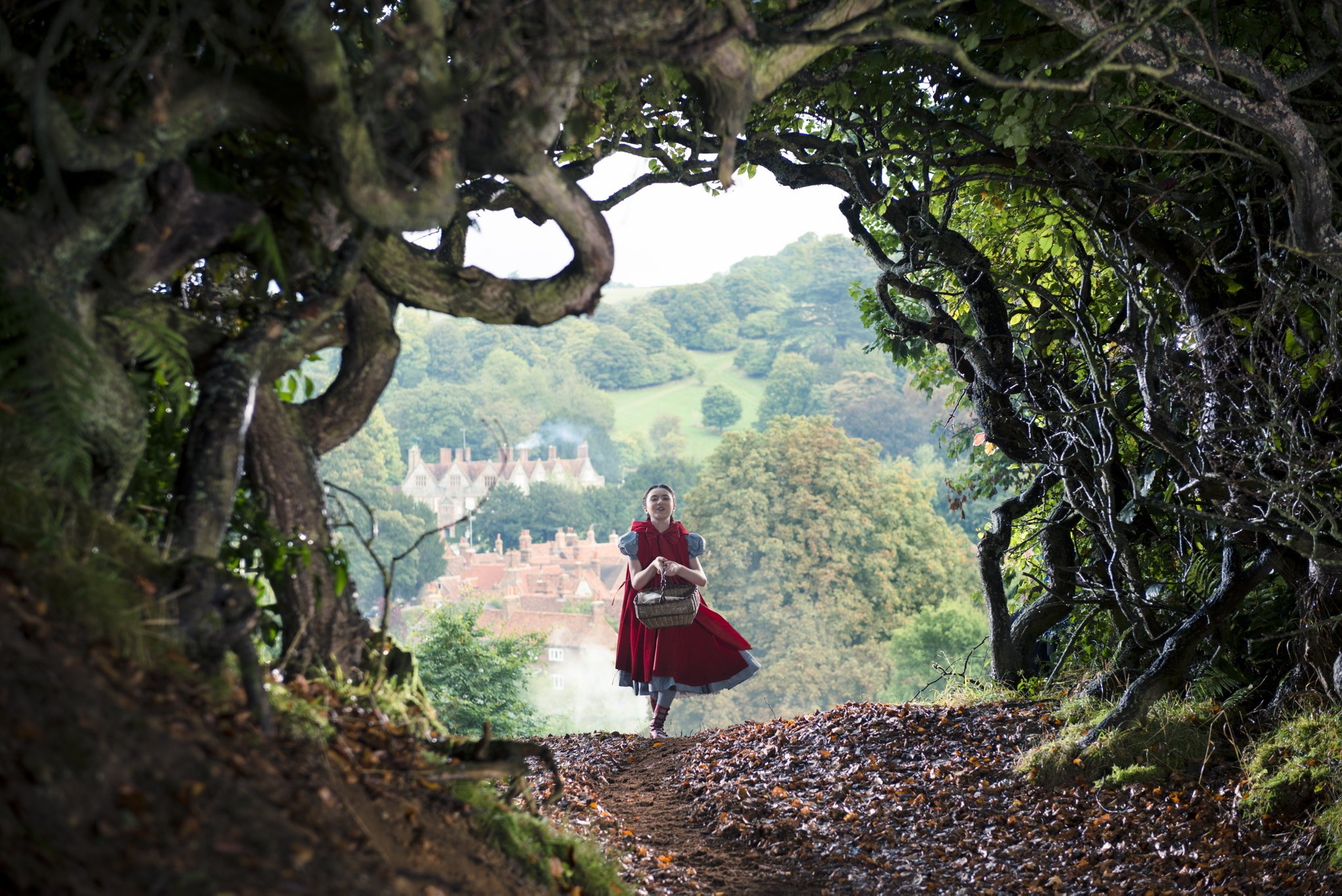








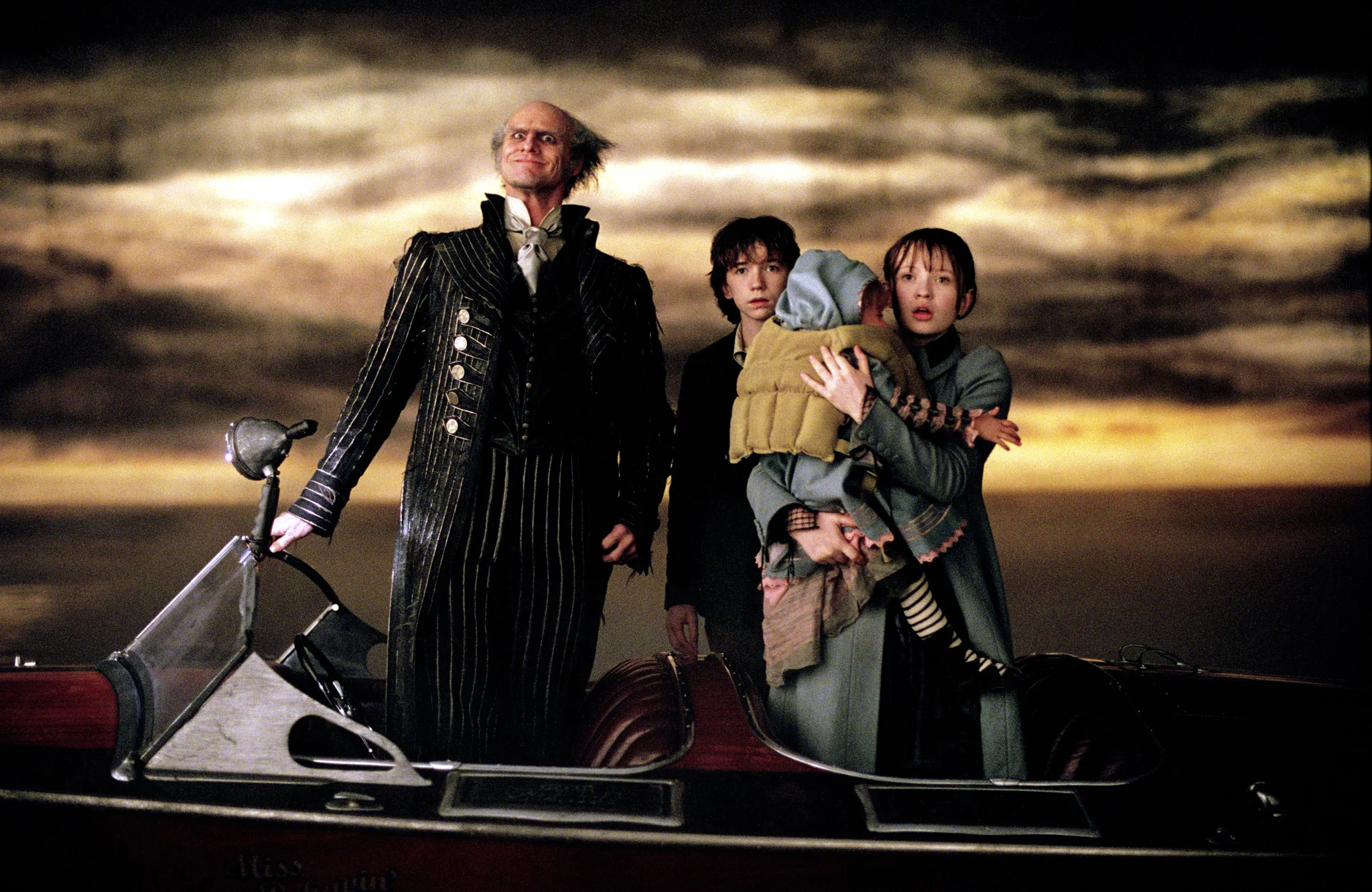






































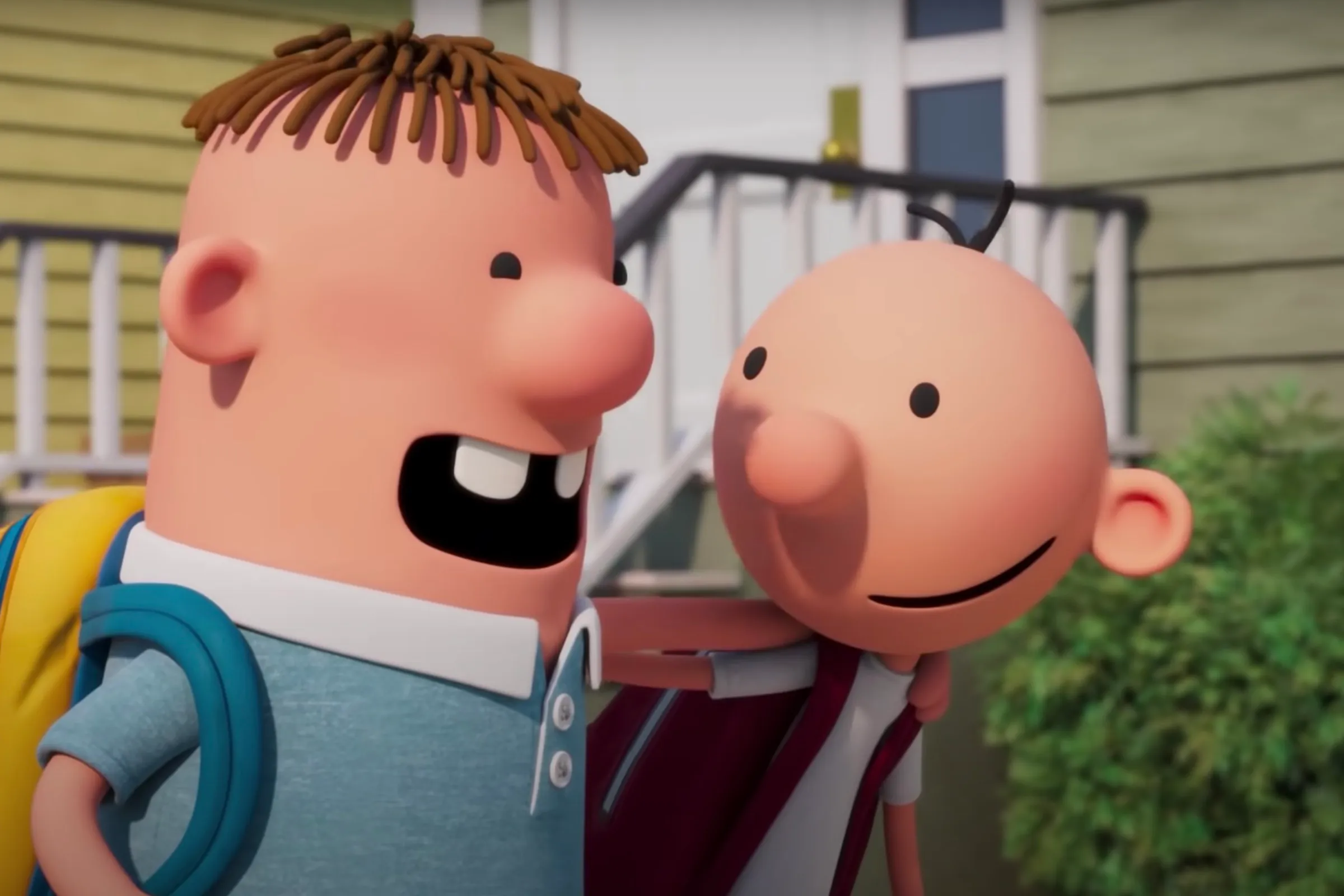






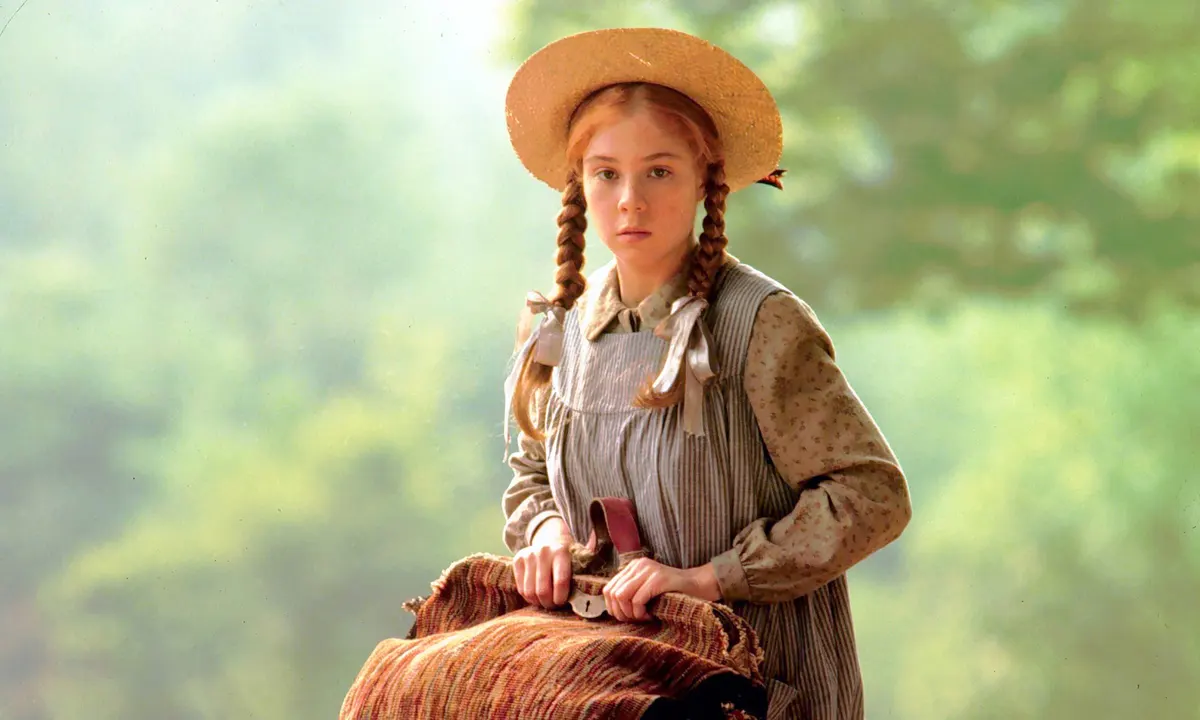



























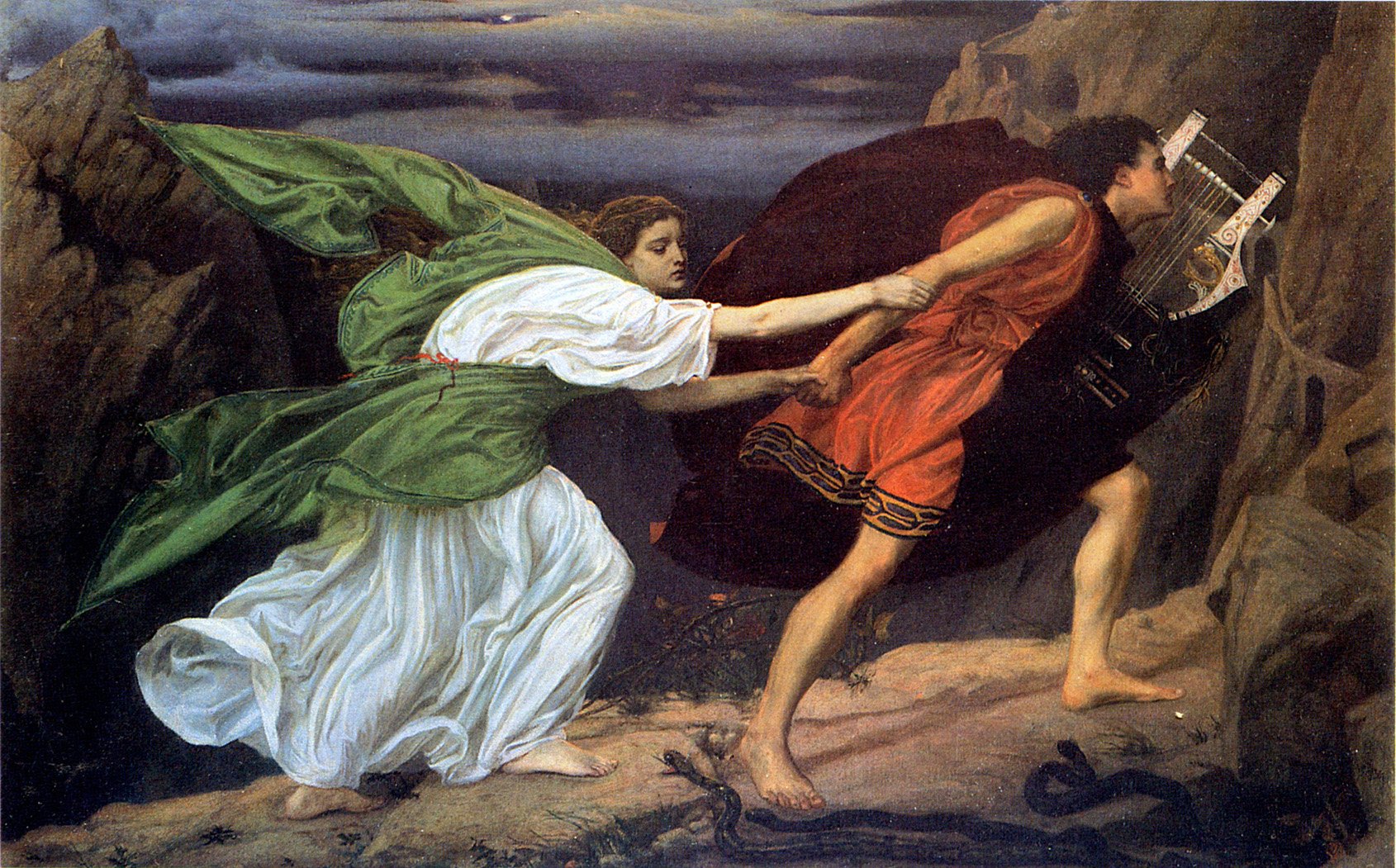
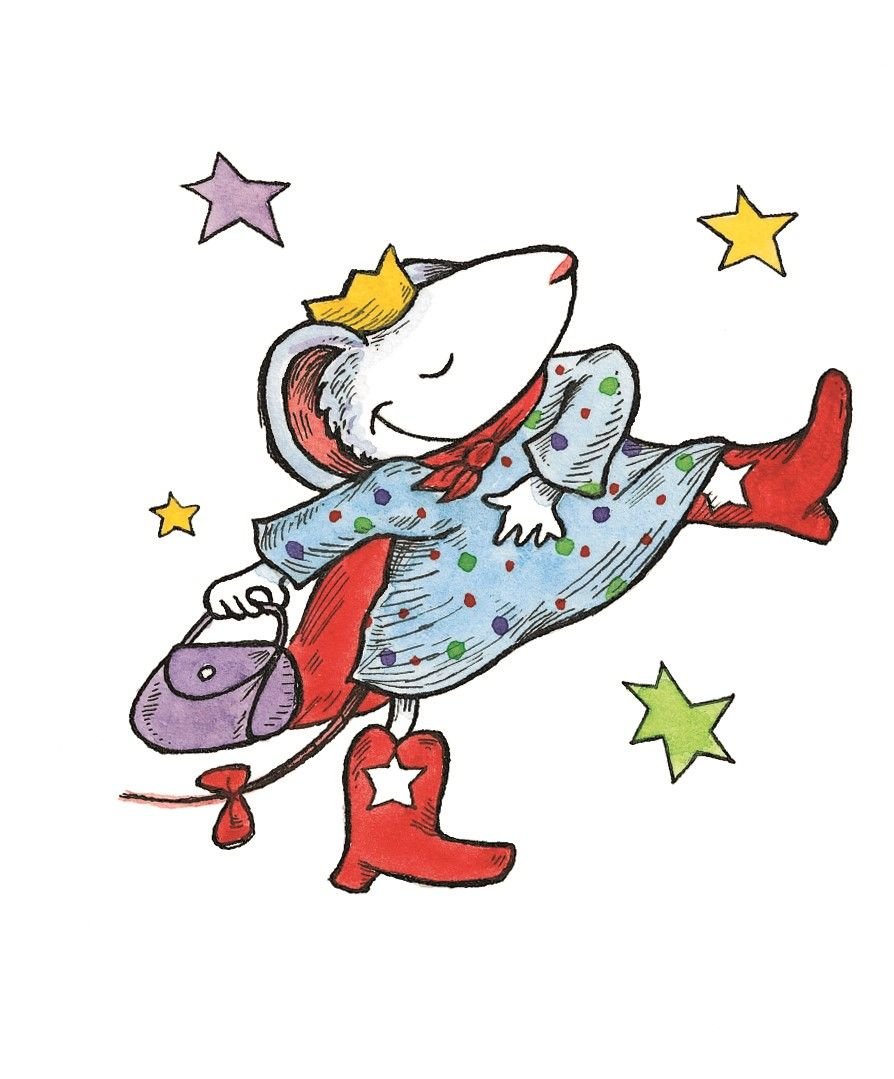
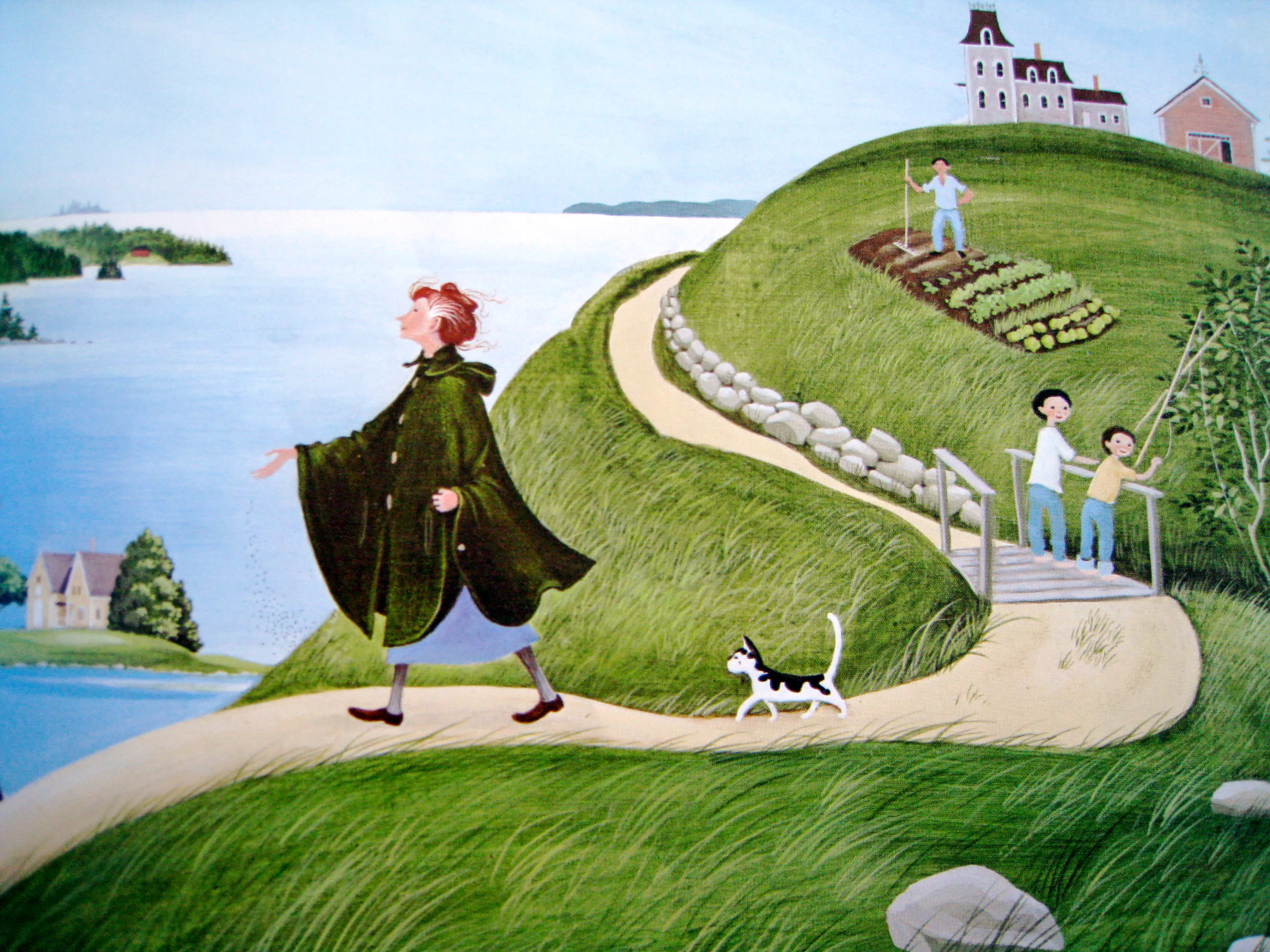







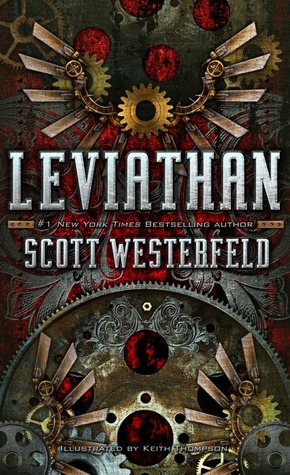















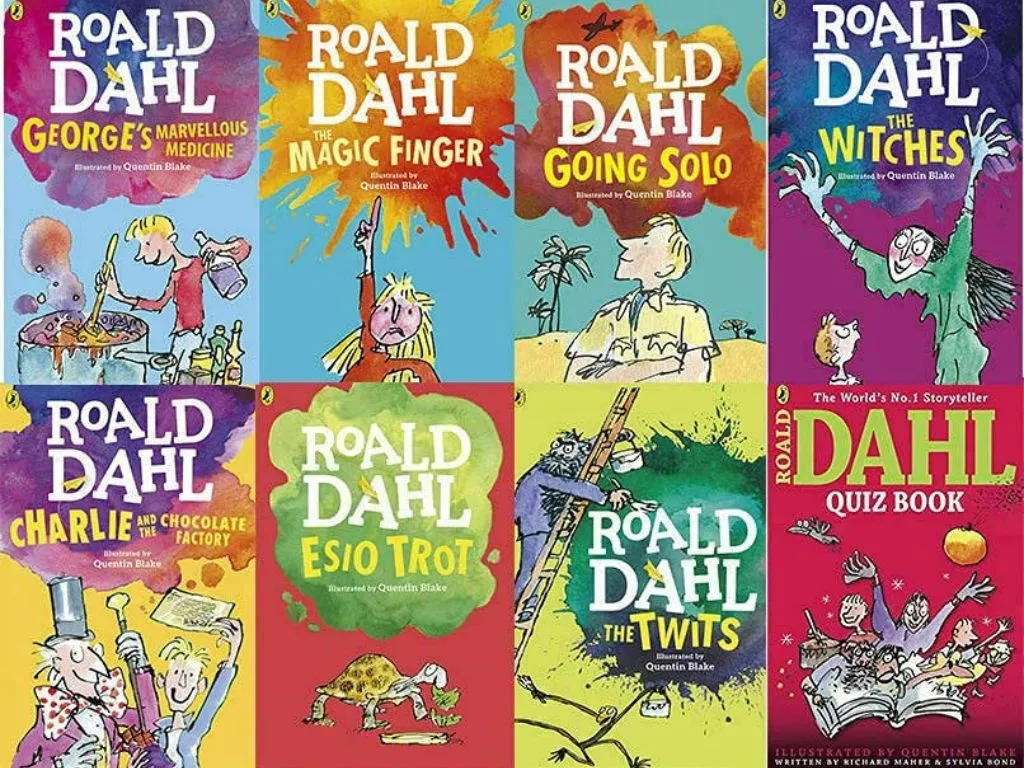




















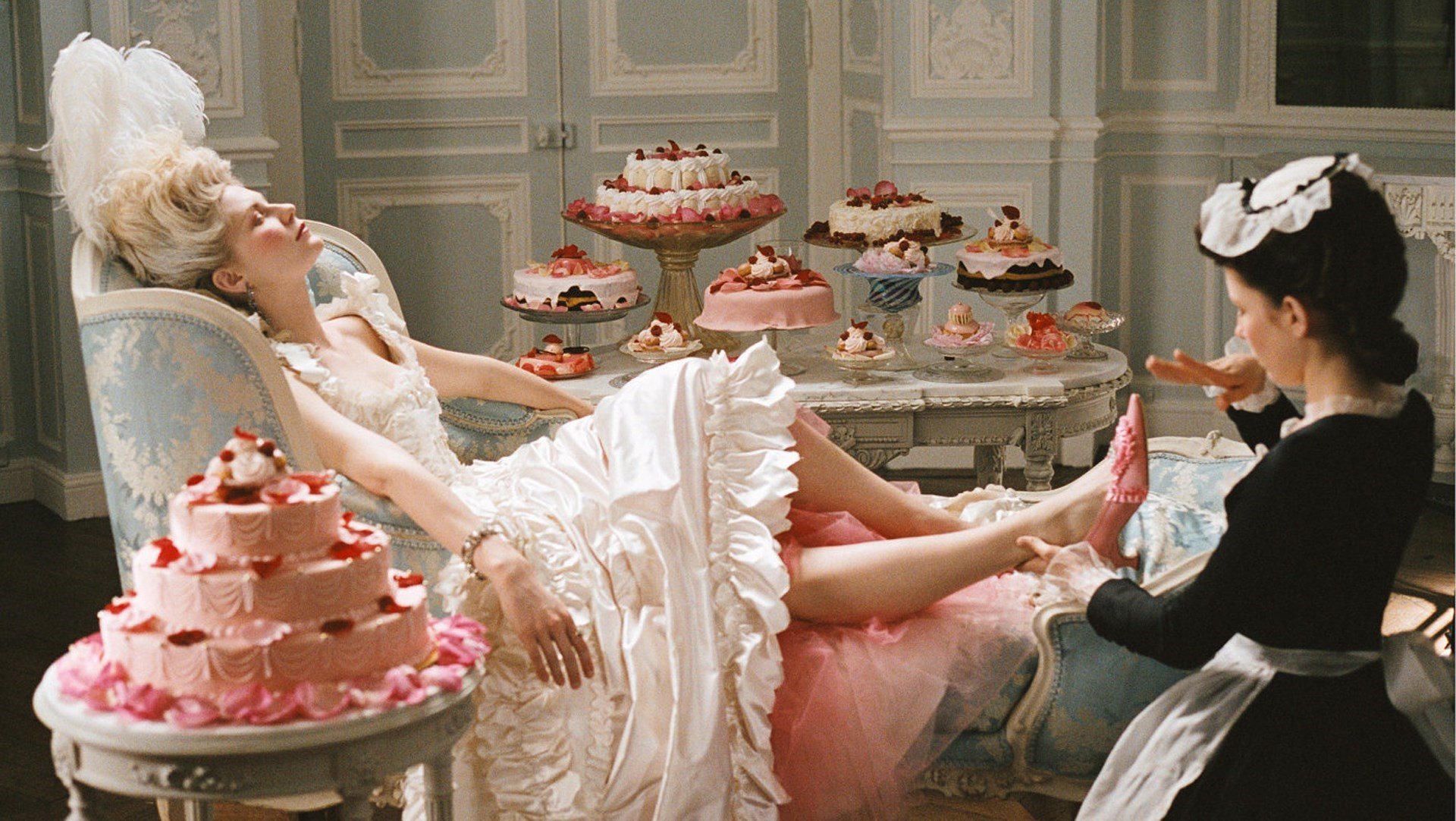









A Note About Affiliate Links on HSL: HSL earns most of our income through subscriptions. (Thanks, subscribers!) We are also Amazon affiliates, which means that if you click through a link on a book or movie recommendation and end up purchasing something, we may get a small percentage of the sale. (This doesn’t affect the price you pay.) We use this money to pay for photos and web hosting. We use these links only if they match up to something we’re recommending anyway — they don’t influence our coverage. You can learn more about how we use affiliate links here.